DashClicks Blog
The industry's top experts offer their best advice, research, how-tos, and insights—all in the name of helping you level-up your business and online marketing skills.
Join Us!

White Label SEO for Mobile-First Indexing: Ensuring Client Sites Rank on All Devices
Mobile devices have become the default way people access the internet. In 2025, around 64% of global web traffic comes from mobile, according to Statista. That number continues to climb as smartphones become faster and data networks more reliable. For digital marketing agencies, this shift changes everything about how SEO is planned, delivered, and measured.
When Google introduced mobile-first indexing, it signaled a permanent change: the search engine now evaluates and ranks pages primarily based on their mobile version. For agencies offering white label SEO, this means ensuring every client’s site performs flawlessly on mobile isn’t optional—it’s essential.
This blog will help digital agencies understand importance of mobile-first indexing, what to prioritize in audits and workflows, and how a trusted fulfillment partner can help ensure clients rank seamlessly across all devices.
Why Mobile Matters Today?
The dominance of mobile traffic is undeniable. Research by DataReportal shows that mobile devices generate more than 58% of all global web visits, with regions like Asia and Africa seeing even higher shares. In the U.S., over 70% of online time is spent on mobile.
Mobile users also behave differently:
- They expect pages to load within 3 seconds—yet the average mobile load time remains around 8.6 seconds (Think with Google, 2024).
- A 1-second delay in mobile load time can reduce conversions by up to 20%.
- Bounce rates on mobile are typically 10–20% higher than desktop when load times lag or UX is poor.
If an agency ignores mobile optimization, it risks losing both visibility and conversions. Imagine a client whose site gets 70% of traffic from mobile but converts only half as well as desktop visitors—that’s not just a UX problem, it’s lost revenue and potential client dissatisfaction.
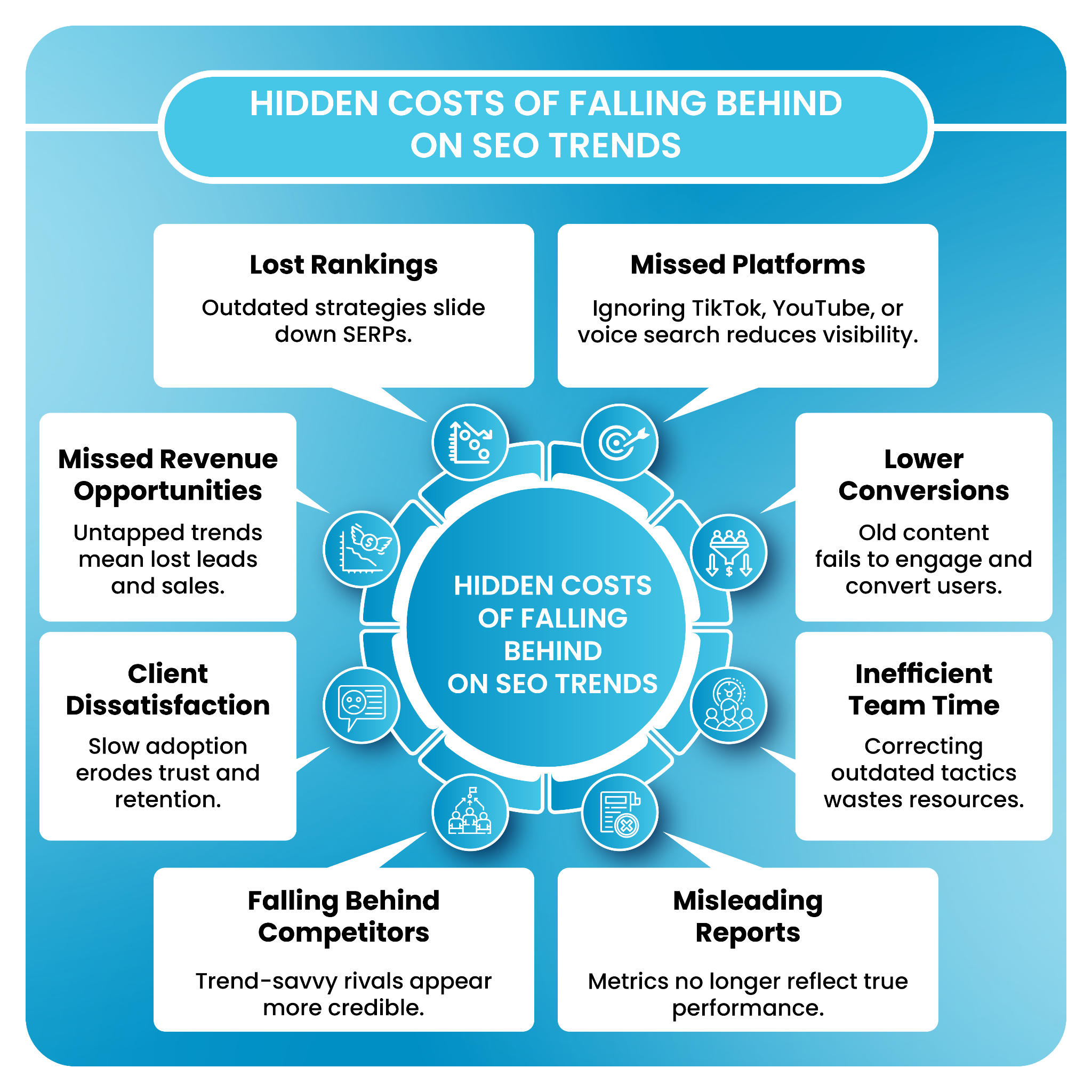
Understanding Mobile-First Indexing
Mobile-first indexing means Google primarily uses the mobile version of your site for ranking and indexing. Before this shift, Google mostly crawled desktop versions, but now, if the mobile version lacks key content or structured data, that missing information may never reach Google’s index.
Google began the mobile-first rollout in 2018 and completed it for most sites by 2023. Today, almost all sites are evaluated through mobile-first indexing.
Agencies should ensure:
- The mobile version matches desktop content in quality and metadata.
- Canonical tags and structured data remain consistent across versions.
- The site uses responsive design, not separate m-dot URLs.
In practice, the key question every agency should ask is: “Does my client’s mobile site have feature and content parity with desktop?” If not, rankings are already at risk.
White Label SEO in the Mobile Era?
White label SEO services allow agencies to offer SEO services under their brand while a fulfillment partner handles execution. But in the mobile-first era, the bar for what counts as “SEO-ready” has risen.
A white label SEO partner now needs to:
- Test for mobile responsiveness across multiple devices.
- Audit Core Web Vitals specifically for mobile (LCP, FID, CLS).
- Review mobile navigation, tap targets, and viewport settings.
- Deliver mobile-specific performance reports.
When evaluating fulfillment partners, agencies should ask:
- Do they test sites on real devices?
- Are reports segmented by device type?
- Can they fix or flag mobile-specific errors?
A strong mobile-first partner should provide a complete checklist covering:
- Mobile site load performance.
- Mobile Core Web Vitals scores.
- Navigation and layout usability.
- Page-level issues that affect mobile indexing.
Core Audit Elements for Mobile-First SEO
To perform a thorough mobile-first audit, agencies should focus on two main pillars: technical performance and user experience.
Technical Audit
- Mobile Load Speed: Measure First Contentful Paint (FCP) and Time to Interactive (TTI). Faster is always better.
- Responsive Design: Ensure the layout adapts seamlessly to various screen sizes.
- Viewport & Font Sizes: Proper scaling for readability without zooming.
- Mobile Metadata: Titles and descriptions should not truncate on smaller screens.
- Crawlability: Confirm the mobile version is fully indexable.
Content & UX Audit
- Content Truncation: Avoid hiding key text or rich media.
- Readability: Use shorter paragraphs, adequate spacing, and high-contrast text.
- Touch Elements: Ensure links and buttons are easily tappable.
- Mobile User Behavior: Account for vertical scrolling and thumb-friendly design.
For example, one agency audit uncovered that a client’s hidden mobile filters prevented Google’s smartphone crawler from accessing 40% of the site’s inventory pages. Fixing that boosted visibility within weeks.
How Mobile-First Indexing Affects Ranking Strategy?
Google doesn’t rank sites separately for mobile and desktop—it uses the mobile version as the primary signal. This makes mobile optimization central to all ranking strategies.
Studies show that mobile-friendly sites are 67% more likely to rank in the top three mobile SERPs (SearchMetrics, 2024). Sites with slow mobile load times can drop up to 20 positions on average due to poor engagement metrics.
A client improving their mobile load time from 6 seconds to 3 seconds might see bounce rates fall by 30%, with average rankings climbing accordingly.
Still, desktop traffic remains important, especially for B2B or enterprise audiences. The best white label SEO strategies ensure device inclusivity, optimizing for mobile without compromising desktop experience.
Adapting White Label Workflows for Mobile-First Delivery
To truly deliver mobile-first SEO, agencies need to adapt their white label workflows—not just the strategy itself. That means building mobile awareness into every stage of the process, from onboarding new clients to monthly reporting. Here’s how agencies can align their operations for a mobile-first world.
1. Intake and Discovery
Start with data. During client onboarding, gather insights about how much of their traffic comes from mobile versus desktop. This helps set priorities for optimization. Analyze device-based user behavior, such as session duration, bounce rates, and conversion paths. For instance, if mobile users abandon forms halfway through, it may signal a design or speed issue. These early findings shape your roadmap and let your white label SEO agency focus on the metrics that matter most.
2. Reporting
Generic SEO dashboards no longer cut it. Reports should clearly segment all major performance indicators—traffic, rankings, CTR, conversions—by device type. A good white label SEO partner will provide customizable dashboards that visualize these differences, helping your agency explain where gains are happening. For example, a 15% increase in mobile conversions looks more impressive when shown alongside device-specific benchmarks.
3. Deliverables
Go beyond keyword rankings and backlinks. Request deliverables that directly address mobile performance, such as:
- Mobile UX audits identify layout, navigation, or tap-target issues.
- Mobile load speed reports focusing on compression, caching, and image optimization.
- Mobile link analysis that evaluates how easily mobile crawlers access linked pages.
Also, encourage your white label partner to support mobile-friendly content formats. Whether that means experimenting with Accelerated Mobile Pages (AMP), Progressive Web Apps (PWAs), or simply optimizing layouts for small screens, these deliverables should enhance usability as well as rankings.
4. Continuous Monitoring
Mobile optimization isn’t static—it’s a living process. Set up monthly reviews of Core Web Vitals to track progress and flag regressions. Keep an eye on Google Search Console for mobile usability alerts, which can reveal issues that automated audits sometimes miss.
Some agencies take it a step further by introducing a mobile-first scorecard in every client report. It highlights improvements in speed, responsiveness, and UX, giving clients a clear view of ROI. This kind of transparency strengthens trust and helps justify ongoing optimization budgets.
Adapting your workflow this way doesn’t just make you mobile-ready—it positions your agency as forward-thinking and technically reliable. It shows clients that you’re not just following SEO best practices, but anticipating the next wave of search behavior before it happens.
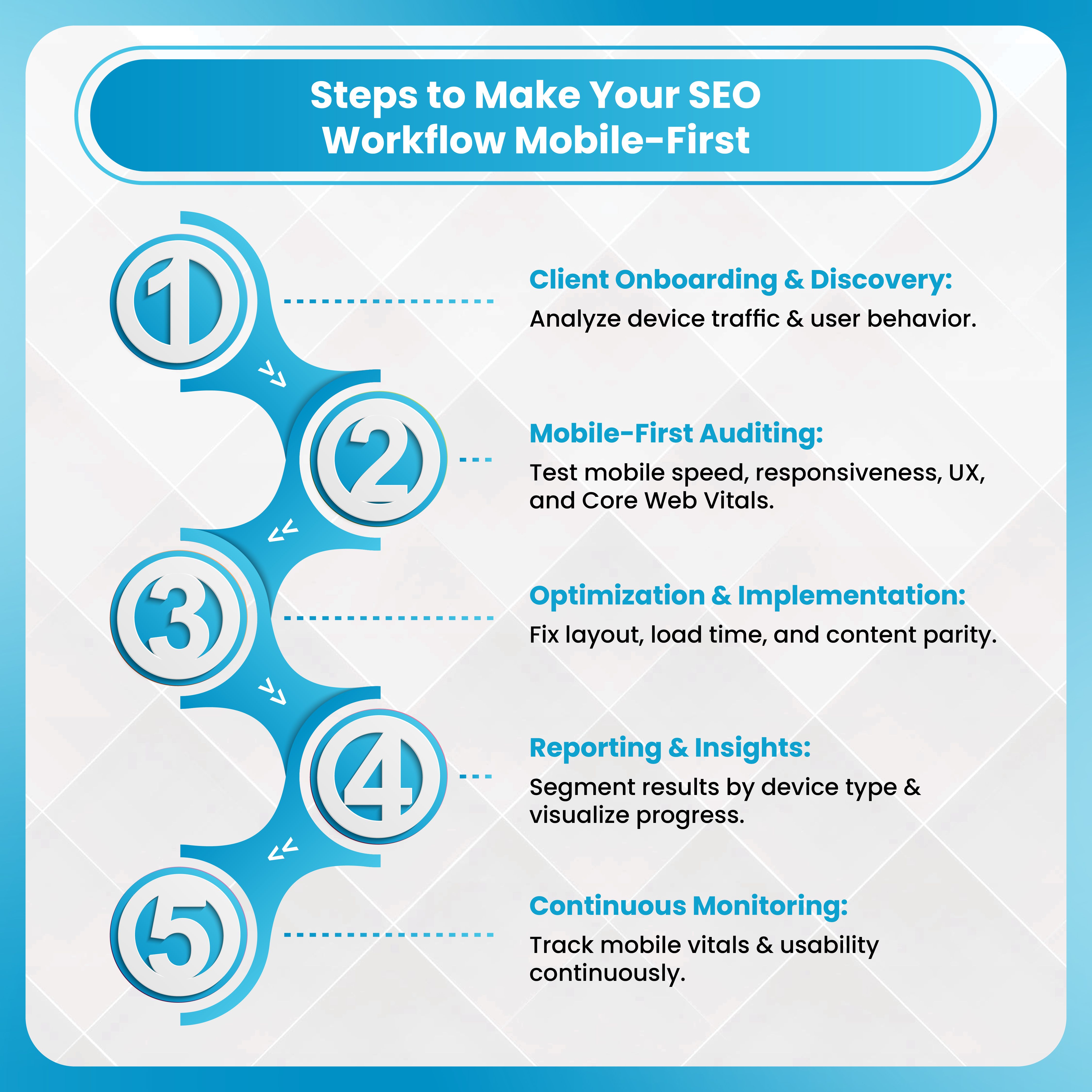
Key Mobile-First Metrics to Track
Agencies should measure:
- Mobile Traffic Share
- Mobile Bounce Rate
- First Contentful Paint (FCP)
- Cumulative Layout Shift (CLS)
- Mobile Conversion Rate
- Mobile SERP Visibility
Benchmark: According to Soax, mobile now accounts for roughly 64% of all internet traffic globally. If your client’s site is below this ratio, it may signal poor mobile discoverability or performance.
A simple example: when one agency reduced a client’s mobile load time from 5.4 seconds to 3.1 seconds, bounce rate fell by 22%, and conversions rose by 15%—purely from improved mobile performance.
Content and Link Strategy for Mobile
Mobile users scroll differently, read faster, and interact more with visuals. That changes how agencies should create and structure content.
Content Best Practices
- Write concise paragraphs.
- Use vertical media formats and compressed images.
- Prioritize “above the fold” information.
Mobile Link Building
- Focus on local SEO, since about 30% of mobile searches have local intent (Google).
- Ensure linked pages are mobile-friendly and quick to load.
- Target mobile-specific SERP features like featured snippets or voice searches.
For instance, a white label SEO agency like DashClicks can create “quick-answer” pages designed for voice search—ideal for mobile users asking short, conversational queries.
Case Example: Agency-Partner Collaboration
Agency A partnered with a white-label provider to optimize a client’s e-commerce site for mobile-first indexing. Before the project:
- Mobile traffic: 70%
- Average mobile load time: 6.4 seconds
- Mobile bounce rate: 62%
The white label SEO partner:
- Compressed heavy images and scripts.
- Improved Core Web Vitals (FCP down from 4.8s to 2.3s).
- Simplified navigation and improved product filtering for mobile.
- Refined internal linking to match mobile crawl patterns.
After 3 months:
- Load time dropped to 2.9 seconds.
- Bounce rate decreased 15%.
- Mobile conversions increased 18%.
- Rankings improved across multiple product-related queries.
The agency reported strong client satisfaction and used the same playbook for future accounts.
Further Reading: The Impact of White Label Fulfillment on Client Satisfaction in Marketing Agencies
Working With a White Label Partner for Mobile-First SEO
When it comes to outsourcing SEO, not all white label providers are equally equipped for a mobile-first world. Agencies that want to deliver measurable results for their clients need to choose partners who treat mobile optimization as a core strategy, not an add-on.
A capable white label partner should go beyond standard SEO tasks like link building and keyword tracking. They should integrate mobile-first data, tools, and performance benchmarks into every stage of the process—from technical audits to reporting.
Here are key areas to evaluate when selecting a partner:
1. Reporting on Mobile Core Web Vitals
Core Web Vitals—Largest Contentful Paint (LCP), First Input Delay (FID), and Cumulative Layout Shift (CLS)—directly affect how Google evaluates mobile experiences. Ask potential partners whether they track these metrics specifically for mobile users. A strong provider will not only measure them but also include actionable insights in reports that guide development and UX teams toward tangible improvements.
2. Monitoring Mobile Usability in Search Console
Mobile usability issues can quietly undermine rankings even when desktop metrics look strong. Your partner should actively monitor the Mobile Usability section in Google Search Console to identify problems like clickable elements being too close, text too small to read, or content wider than the screen. Ongoing tracking ensures your clients’ sites maintain compliance with Google’s mobile standards as updates roll out.
3. Device-Segmented Deliverables and Data
True mobile-first SEO means understanding that performance varies across devices. A solid partner will segment deliverables and reports by device type—mobile, tablet, and desktop—so agencies can pinpoint where the biggest opportunities lie. For example, they might show that bounce rates are higher on mobile or that certain landing pages load slower on smaller screens.
4. Clear, Measurable SLAs (Service-Level Agreements)
Agencies should look for partners who define performance expectations clearly in their service agreements. For instance:
- “Mobile load time must improve by at least 25% within 45 days.”
- “Monthly reporting must include device-segmented metrics and Core Web Vitals benchmarks.”
These clauses hold partners accountable and ensure consistent progress toward client goals.
5. Continuous Optimization and Adaptation
Mobile-first SEO isn’t a one-time technical adjustment—it’s an ongoing process. Browsers evolve, devices change, and user behavior shifts constantly. A strong white label SEO partner will monitor these changes proactively, adjusting strategies to maintain and improve rankings over time. They’ll also keep testing new mobile technologies, like progressive web apps or responsive design frameworks, to help clients stay competitive.
In short, a reliable white label SEO services provider acts as an extension of your agency—committed to your clients’ long-term mobile performance. Their expertise in mobile-first SEO ensures that every campaign you deliver not only meets search standards today but continues to perform as the web keeps evolving.

Why DashClicks Works for Agencies Focused on Device-Inclusive SEO?
DashClicks gives agencies a complete white label ecosystem built for scalable, mobile-first SEO delivery. The platform combines software, fulfillment, and reporting into one streamlined system.
Here’s how DashClicks supports agencies on the mobile-first front:
- Mobile-First Reporting: Dashboards break down performance by device, making it easy for agencies to present clear data to clients.
- White Label Fulfillment: The white label SEO services handles mobile audits, responsive design fixes, link-building, and UX improvements.
- Automated Workflows: Agencies can launch and monitor mobile-first campaigns for multiple clients without managing every detail.
- Cross-Device Optimization: From Core Web Vitals tracking to content structure checks, DashClicks ensures every site ranks well across screens.
For agencies scaling fast, DashClicks eliminates the complexity of managing technical SEO in-house. You focus on client relationships; they handle the behind-the-scenes optimization—ensuring every client site is mobile-ready and performing across devices.
Common Pitfalls and How to Avoid Them
Pitfall 1: Treating mobile as an afterthought
Fix: Run a full mobile audit before launch and ensure parity between desktop and mobile versions.
Pitfall 2: Ignoring mobile load speed
Fix: Test regularly using PageSpeed Insights and monitor Core Web Vitals.
Pitfall 3: Tracking only desktop metrics
Fix: Use dashboards that segment traffic and performance by device.
Pitfall 4: Partnering with providers that lack mobile expertise
Fix: Vet white-label vendors for mobile experience, case studies, and reporting standards.
Future Trends in Mobile-First SEO and White Label Growth
The mobile landscape is evolving quickly. 5G networks, foldable screens, and voice search are reshaping user expectations. Agencies should expect:
- Increased optimization for voice-based and visual searches.
- Demand for mobile commerce experiences and progressive web apps.
- Growth in white label SEO services with the market projected to rise from $64.4 billion in 2024 to $75.2 billion in 2025.
Staying ahead means building flexible, device-inclusive strategies that work across emerging form factors and connection speeds.
Final Thoughts
Mobile-first indexing isn’t a passing trend—it’s the standard. For agencies, ensuring that clients’ sites perform well on every device is no longer optional. Partnering with a white-label SEO provider that understands this environment is the fastest way to deliver results at scale.
A mobile-first white-label strategy aligns technical SEO, UX, and content under one goal: visibility and conversions across all devices. Agencies that embrace this model will see stronger client retention and faster growth.
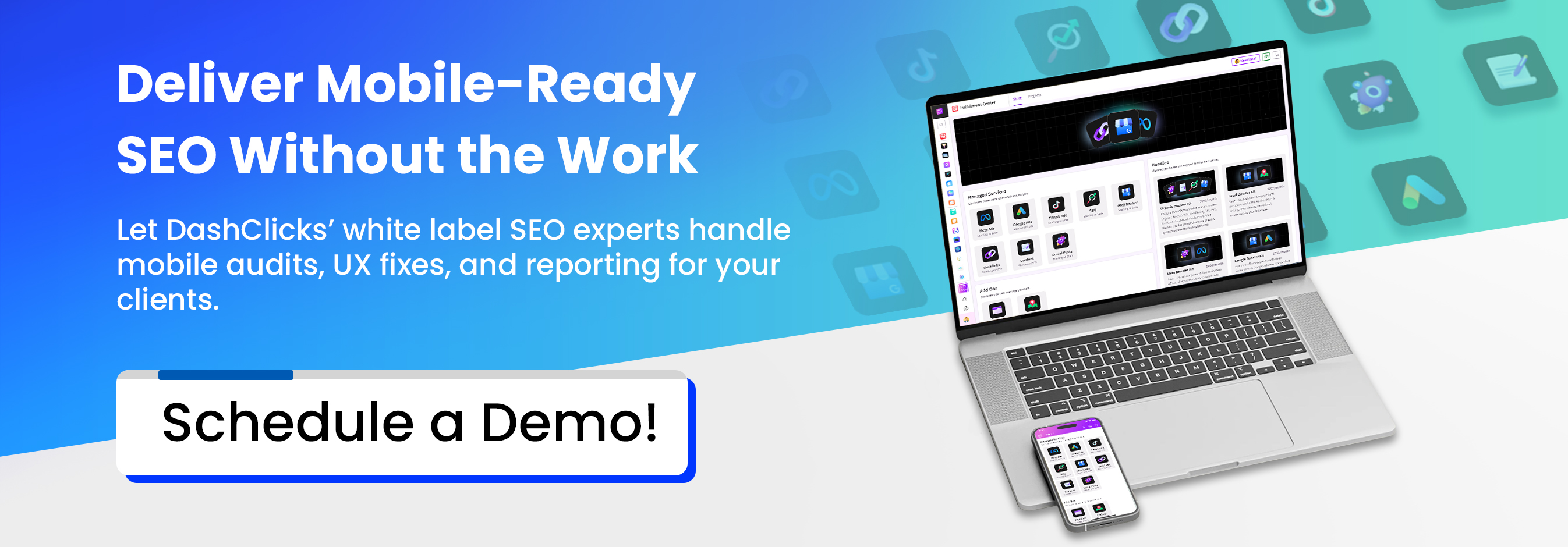

Common PPC Reporting Mistakes Agencies Avoid with White Label PPC Partners
Many digital marketing agencies have mastered campaign setup, creative testing, and bidding strategies for pay-per-click (PPC) advertising. Yet when it comes to reporting results back to clients, mistakes still happen. Even with advanced tools and systems, agencies often run into issues with measurement gaps, attribution errors, data delays, and miscommunication.
Working with a white label PPC provider is supposed to simplify operations. The partner handles the execution while the agency focuses on strategy and client relationships. But when it comes to reporting, the lines can blur—and that’s where problems begin.
In this blog, we’ll explore the most common reporting mistakes agencies make when partnering with a white label PPC agency and how to prevent them. Interestingly, more than half of marketing professionals today say PPC management is getting harder, yet only a small fraction have fixed their measurement problems. The gap between execution and accurate reporting is still wide—and costly.
Mistake #1: Relying on Raw Platform Output Without Context
One of the most common pitfalls agencies fall into—especially when managing multiple accounts—is treating the numbers in Google Ads or Meta Ads Manager as the final truth. It’s fast, it’s convenient, and it feels data-driven. But sharing raw platform data with clients without interpretation or context can easily misrepresent campaign performance.
At first glance, dashboards look trustworthy. They show impressions, clicks, conversions, cost per acquisition, and return on ad spend—all in one place. But what clients rarely see is the fine print: platform data often includes estimated, delayed, or modelled results. That means what you’re showing today may not reflect actual business outcomes tomorrow.
Why it matters:
- Modelled conversions can inflate numbers. Many ad platforms now rely heavily on machine learning to fill in gaps from privacy restrictions or tracking limitations. These modelled conversions are estimates—not confirmed results—and can make performance look better (or worse) than it really is.
- Conversion delays can skew short-term data. Depending on the product or service, a significant percentage of conversions happen several days after the click. Reporting too soon gives an incomplete view.
- Clients expect finality. When you present a dashboard snapshot as the monthly result, clients assume it’s accurate and final. Later corrections, even if justified, can erode trust.
Consider this scenario: You generate an end-of-month report on the 30th that shows 120 conversions. But if your typical account has a one-to-three-day conversion lag, roughly 30% of actual conversions might not yet be recorded. Within a few days, the real number could rise to 150. That 25% discrepancy can make your results appear weaker than they truly are—and that misrepresentation affects how your client perceives campaign value.
This mistake becomes even more pronounced when working with white label PPC partners. The partner might deliver platform screenshots or raw data tables on a fixed schedule. If your team forwards those numbers directly to the client without refining them, you risk miscommunication on both sides.
Pro tip for agencies:
- Add a data-refinement step before sending any report. Work with your white-label partner to clean, validate, and reconcile data across platforms.
- Label early numbers as “preliminary.” Make it standard practice to mark any report shared before full data maturation as a draft version.
- Educate clients on reporting cycles. Explain how conversion data matures over time, so they understand why final numbers are shared a few days later.
- Include a “data maturity” note or visual. For example: “Current data represents 90% of expected conversions; final reconciliation due on the 7th.”
This small process change not only ensures your reporting accuracy but also strengthens client confidence in your transparency and professionalism. When you refine the data before presenting it, you show that you’re not just forwarding numbers—you’re interpreting them. And that’s what separates a tactical PPC agency from a strategic partner.
Mistake #2: Misaligned Tracking Between Agency, Partner, and Client
When agencies outsource PPC management, they often overlook the importance of consistent tracking frameworks. If the agency, white label partner, and client each use different conversion definitions or tracking setups, results will never match.
What can go wrong:
- Duplicate or missing tags.
- Inconsistent look-back windows.
- Conflicting conversion definitions.
- Unlinked CRM or analytics systems.
Example: Your agency tracks “First-Time Purchases” as conversions, but your white label partner tracks all “Purchases.” When the numbers don’t align, you’re left explaining a discrepancy that could have been avoided.
Pro tip for agencies:
- Own the tracking setup from start to finish.
- Confirm naming conventions, tags, and conversion events across all parties.
- Document the tracking framework and review it together quarterly.
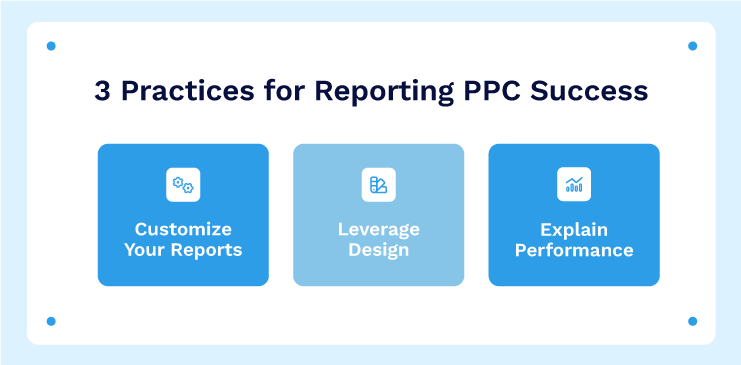
Image Source: AdClicks
Mistake #3: Failing to Clarify What “Conversion” Really Means
A conversion isn’t always a sale. It might be a lead form, a call, or a download. But not all conversions hold equal value. If you or your partner treats every conversion the same, you risk reporting vanity metrics that don’t represent real business results.
Why it matters:
- Clients might assume all conversions are high-value actions.
- You could celebrate higher numbers that actually bring less profit.
- Quality often matters more than quantity.
Example: One month you see 200 conversions, the next only 170. At first, that looks like a decline—but if the second month’s conversions were from qualified buyers, the campaign actually performed better.
Pro tip for agencies:
- Define conversion tiers (e.g., form fill, qualified lead, closed sale).
- Assign weighted values to each conversion type.
- Ensure your partner understands which conversions matter most.
Mistake #4: Presenting KPI Drops Without Explaining Macro Factors
PPC performance fluctuates for many reasons—algorithm updates, competition, seasonality, or budget shifts. When you report numbers without explaining why they changed, clients can easily misread the situation.
Why it matters:
- Clients see the outcome but not the context.
- Reporting a “CTR down 10%” without explanation looks like failure even when it’s a strategic move.
- Context protects credibility and builds trust.
Example: A campaign shifts 40% of the budget to a new region. Clicks drop, but cost-per-acquisition improves. If you only show “clicks down,” the client misses the full picture.
Pro tip for agencies:
- Include a “Performance Context” section in each report.
- Get your white label partner’s input on strategy or algorithm changes.
- Use that context to turn KPI shifts into meaningful insights.
Mistake #5: Ignoring Data Latency or Conversion Lag
Data doesn’t always appear instantly. In many campaigns, conversions can take days or even weeks to show up. Reporting too early can lead to inaccurate performance numbers.
Why it matters:
- Late conversions make early reports look weaker.
- Over time, this erodes client confidence.
- Partners may optimise based on incomplete data.
Example: You report 120 conversions on the 30th, but by the 7th of the next month the real total is 150. That 25% gap damages credibility.
Pro tip for agencies:
- Add a “lag adjustment” section showing preliminary and final results.
- Delay formal reporting by a few days to allow full data capture.
- Ask your white label PPC agency to provide notes on conversion delays.
Mistake #6: Over-reliance on Platform Modelling Without Transparency
Ad platforms now rely heavily on data modelling to fill in conversion gaps—especially after privacy updates. These models can inflate results compared to what’s verified in a client’s CRM.
Why it matters:
- Clients often track real sales in their CRM.
- Platform-reported revenue can differ significantly from verified data.
- Without transparency, you appear unreliable.
Example: Your partner reports a return on ad spend (ROAS) of 8× from Google Ads, while the client’s CRM shows only 4×. Without context, that looks like an error.
Pro tip for agencies:
- Present both platform and verified CRM numbers.
- Clearly label modelled vs. actual conversions.
- Educate clients on why discrepancies exist and how they’re managed.
Agency Tip: If you're using DashClicks, their CRM software lets you validate platform conversions with actual lead and sales data—making reporting far more reliable.
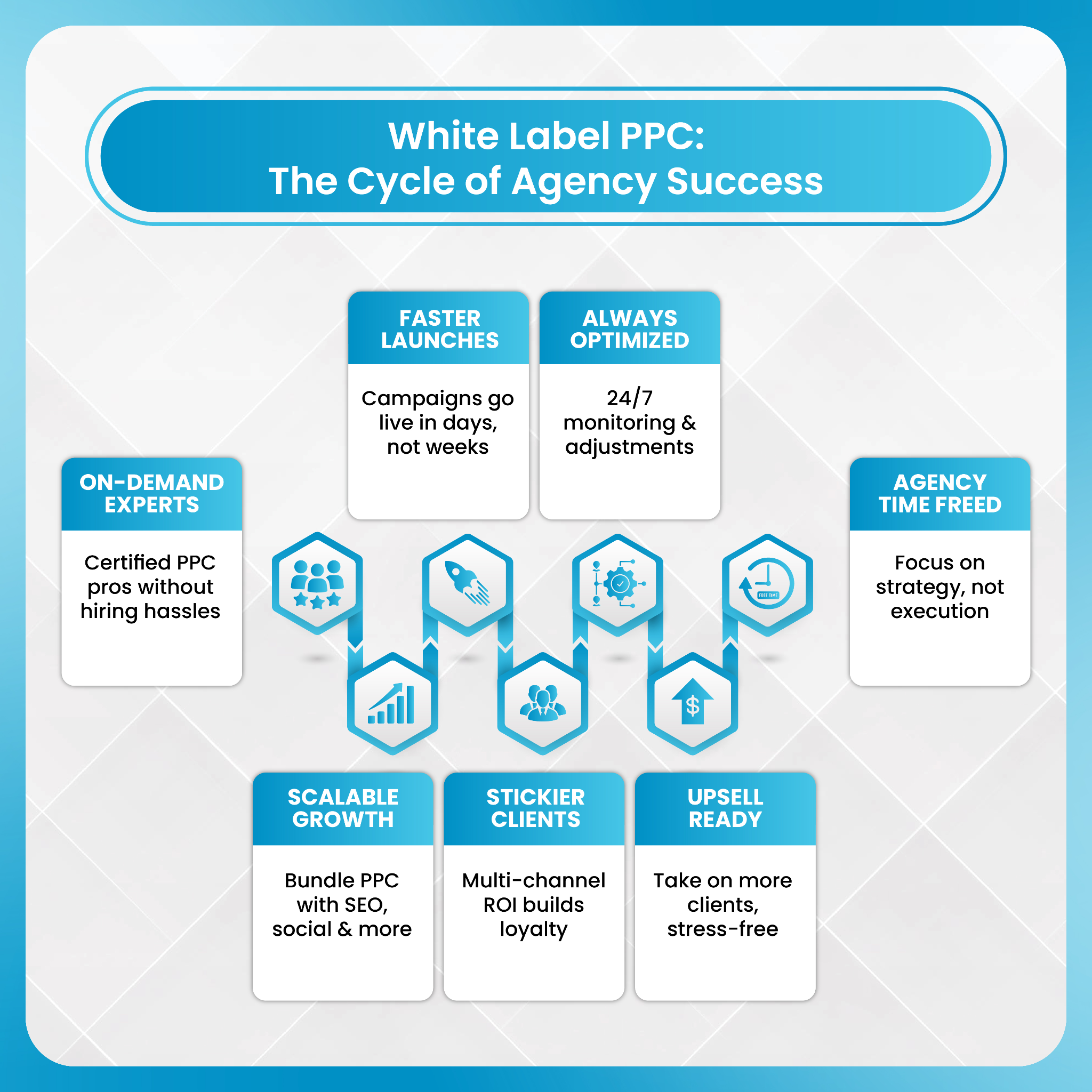
Mistake #7: Reporting Without Segmentation, Attribution, or Funnel Depth
Basic reports focus on clicks, conversions, and CPA. That’s fine—but it ignores the bigger picture. Smart agencies go deeper by analysing segments, attribution paths, and funnel stages.
Why it matters:
- Shallow reporting hides opportunities and threats.
- You can’t identify where high-value customers come from.
- Clients miss insights about long-term value or repeat purchases.
Example: You report a 15% drop in cost per acquisition but don’t note that lead quality fell. The client discovers lower-quality leads later and questions your reporting integrity.
Pro tip for agencies:
- Segment data by device, audience, and creative type.
- Track assisted conversions and multi-touch journeys.
- Include funnel metrics like lead-to-sale rates and lifetime value.
Mistake #8: Using One-Size-Fits-All Reporting Templates
Rebranding your partner’s standard report and sending it to every client might save time—but it weakens your agency’s value. Clients want insights tied to their business, not a generic PDF.
Why it matters:
- A generic report shows no understanding of the client’s goals.
- The metrics may not reflect their true success indicators.
- It makes your agency look less strategic.
Example: For an e-commerce client, you include “New Conversions” but ignore “Repeat Purchases.” The client sees the gap and assumes you’re not tracking customer retention.
Pro tip for agencies:
- Identify the top 3–5 metrics that align with each client’s goals.
- Ask your white label partner to provide supporting data for those KPIs.
- Use the partner’s report as a base, but add your own insights and analysis.
Mistake #9: Not Defining Reporting Responsibilities
Many agencies assume the white label partner will handle reporting. The partner assumes the agency will. The result? Missed deadlines, inconsistent formats, and unhappy clients.
Why it fails:
- No clarity on who prepares what or when.
- Reports go out late or contain unverified data.
- The client questions the agency’s professionalism.
Example: The partner sends raw data on the 2nd of the month. The agency reviews it late and sends the report on the 10th, after the client has already asked for it twice.
Pro tip for agencies:
- Set clear reporting roles:
- Partner: provides unbranded raw data by a fixed date.
- Agency: reviews, adds insights, brands, and sends to the client.
- Both: meet monthly to review accuracy and timelines.
- Create an SOP that documents this workflow for every client.
Mistake #10: Treating Reports as Compliance Instead of Strategy
Too often, agencies view monthly PPC reports as tasks to check off. But they’re opportunities to show strategic value. Reports should spark conversation, not end it.
Why it matters:
- Clients want direction, not just data.
- White label partners handle execution; you own the interpretation.
- Turning data into strategy strengthens client retention.
Example: Instead of writing, “CPA dropped by 12%,” say, “CPA dropped by 12% after refreshing creatives. Next, we’ll test look-alike audiences to expand conversions and aim for a 20% volume increase next month.”
Pro tip for agencies:
- Add “What this means” and “Next steps” sections to every report.
- Ask your partner for performance notes and integrate them into your recommendations.
- Use reports as springboards for new tests, strategies, and upsell conversations.
How White Label PPC Services Help Agencies Build Better Reports?
Partnering with a white label PPC provider isn’t just about outsourcing campaign management—it’s about gaining access to deeper data, cleaner insights, and a more consistent reporting framework. For many agencies, reporting is where client relationships are won or lost, and that’s exactly where white label partnerships can make a measurable difference.
Here’s how white label PPC services help elevate your reporting process:
- Centralised Data Management: White label platforms like DashClicks consolidate performance metrics from Google, Meta, and other ad platforms into a single, unified dashboard. Instead of switching between multiple data sources, agencies can view every key metric in one place—saving hours of manual compilation and reducing the risk of reporting errors.
- Automated and Customizable Reports: Instead of building reports from scratch every month, white label partners provide automated templates that can be tailored to each client’s KPIs. This helps agencies deliver professional, branded reports that align with the client’s goals while maintaining speed and consistency.
- Deeper Insight Through Expert Input: A strong white label partner doesn’t just deliver data—they interpret it. They provide insights into performance trends, explain anomalies, and highlight optimisation opportunities that agencies can use to guide strategic conversations with clients.
- Consistent Accuracy and Timeliness: Since data collection and processing are managed by dedicated experts, reporting becomes more reliable. Agencies can set predictable reporting schedules and confidently deliver numbers that have been verified, reconciled, and formatted by specialists.
- Scalability Without Overload: As your agency grows, so does your reporting workload. A white label PPC agency allows you to scale without hiring additional analysts. You get the capacity to handle more accounts while maintaining the same quality and turnaround speed.
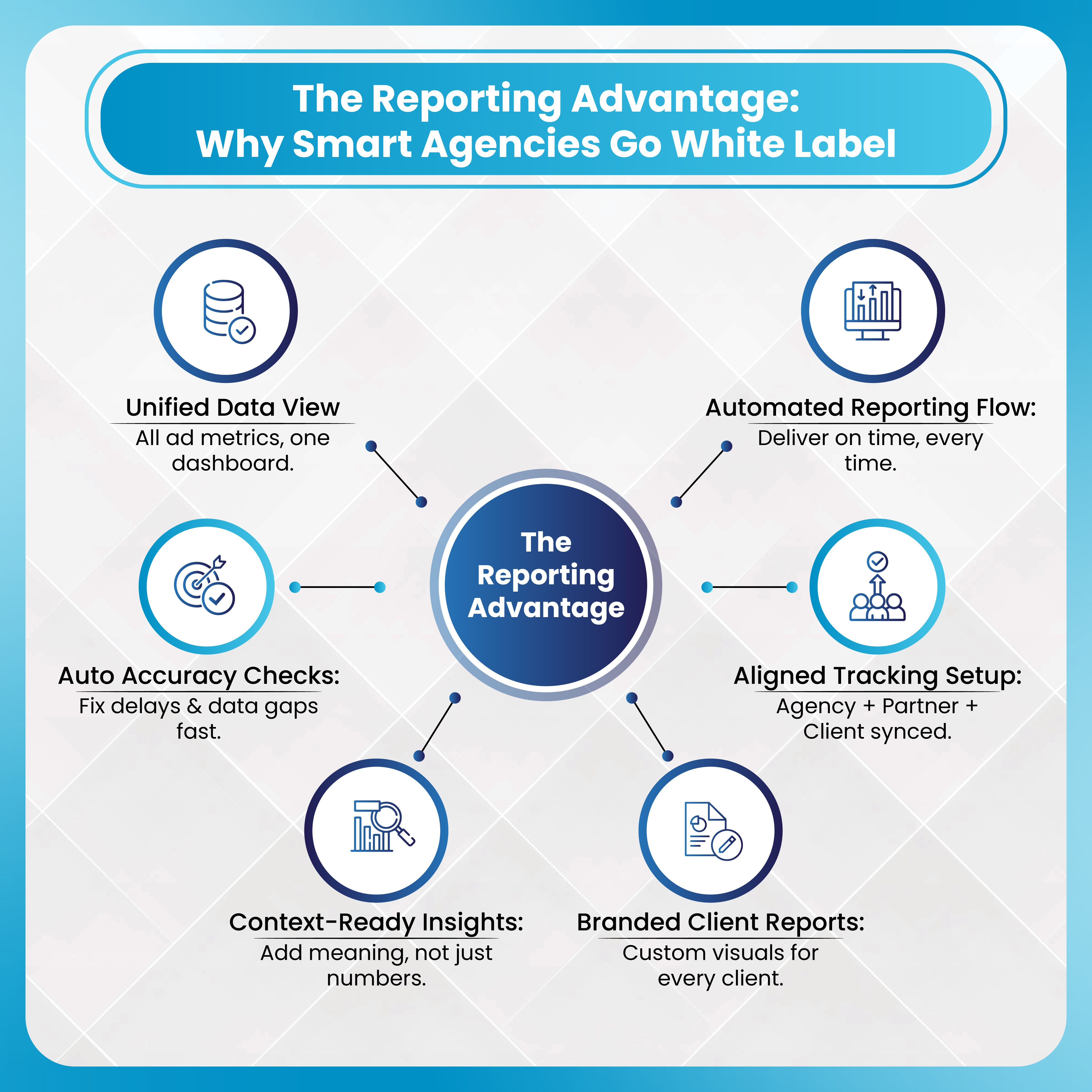
How DashClicks Helps Agencies Avoid PPC Reporting Mistakes?
DashClicks gives agencies full control over client reporting while simplifying collaboration with white label PPC partners. The platform’s automation and customisation features help you:
- Consolidate data from multiple ad platforms into one clean dashboard.
- Build custom client reports that reflect true business metrics.
- Automate conversion-lag adjustments and keep data current.
- Share dashboards securely with white-label partners for transparency.
- Deliver branded, easy-to-understand reports without manual work.
By streamlining tracking, analytics, and client communication, DashClicks lets agencies focus on strategy—not spreadsheet management. It helps you stay accurate, organised, and confident when presenting campaign results.
Conclusion – Elevating Your Agency’s Reporting with White Label PPC Partners
Accurate PPC reporting isn’t just about numbers—it’s about storytelling, transparency, and trust. Each mistake we’ve covered is avoidable when agencies stay proactive and intentional with their reporting process.
To recap:
- Don’t rely on raw platform data—add context and commentary.
- Align tracking across your agency, partner, and client.
- Define conversion values clearly and consistently.
- Provide explanations for KPI shifts and performance trends.
- Account for data latency and modelling differences.
- Customize every report for each client’s goals.
- Treat reporting as a strategic conversation, not a formality.
White label PPC partnerships can supercharge an agency’s capacity—but reporting remains your voice to the client. When handled with structure and insight, it becomes a tool for credibility and growth.
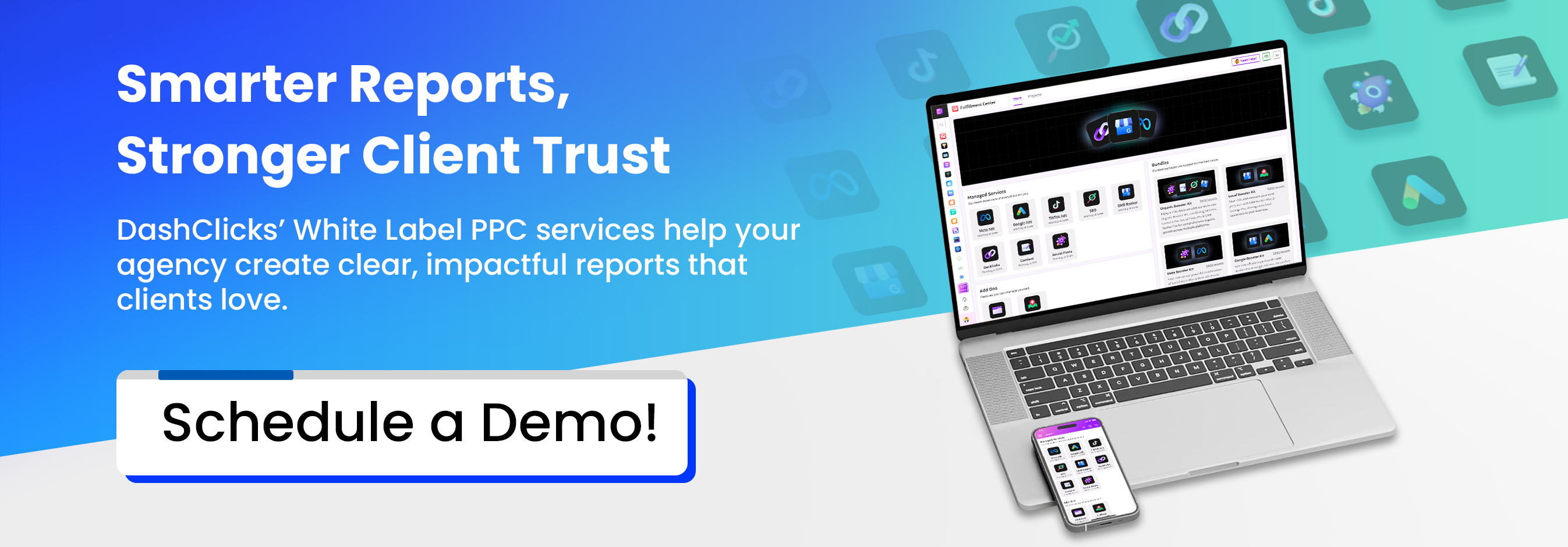

Recurring Revenue Models: Building Subscription SEO Packages with Resellers
Every agency owner knows the feeling — the end of the month arrives, invoices go out, and you realize you’re starting from zero again.
That’s the rollercoaster of one-off projects. Web redesigns, audits, campaign setups… each brings a quick bump in revenue, but once they’re done, the cash flow slows, and the sales chase starts over.
Now imagine if instead of starting from zero, you woke up each month knowing 70-80% of your revenue was already guaranteed — all from ongoing SEO subscriptions that your team (or your white label SEO partner) continues to deliver behind the scenes.
That’s the power of a recurring revenue model.
According to, 73% of digital marketing agencies report inconsistent income because they rely on one-time projects. Meanwhile, the subscription economy continues to grow, with businesses across industries posting an average 7% monthly recurring revenue (MRR) increase in 2023.
And the agencies that have leaned into white label SEO partnerships? They’re reporting higher client retention rates compared to those doing everything in-house.
So let’s break down how you can build scalable, profitable subscription-based SEO packages with the help of a white label SEO reseller — and finally turn your agency into a predictable growth machine.
Why Many Agencies Struggle with Recurring Revenue?
Let’s be honest — most agencies aren’t set up for recurring revenue.
They’re structured around sprints, deliverables, and deadlines. You sell a website, deliver it, invoice it, and move on. But when it comes to SEO, that model falls apart, because SEO isn’t a deliverable — it’s a discipline.
The problem starts with how SEO is sold. Many agencies pitch it like a one-time optimization project instead of an ongoing growth strategy. Clients think, “You’ll fix my website and I’ll rank forever.” You and I both know that’s not how it works — algorithms evolve, competitors adapt, and new content constantly reshuffles rankings.
Then there’s resource strain. Building an in-house SEO team with specialists in content, link-building, local SEO, and technical audits is expensive. And unless you have a steady client pipeline, you’ll always be over- or under-staffed.
Margins take another hit when every campaign is custom. A bespoke strategy for every new client may sound great, but it kills scalability.
And even when you do sell retainers, churn creeps in because clients can’t see consistent ROI. They want proof their spend is moving the needle — traffic, calls, conversions — and many agencies can’t report results effectively.
The outcome?
- Unpredictable cash flow.
- Burnout from constant client acquisition.
- Difficulty forecasting growth or valuing the business.
According to SEOSandwich, the average SEO agency retains only about 65% of its clients for more than a year. Combine that with fluctuating project income, and it’s no wonder most small-to-mid-size agencies plateau.
The fix isn’t more sales calls or discounts. It’s about restructuring your offer — turning SEO into a subscription that compounds in value month after month. And that’s where white label SEO partnerships come in.
Building Subscription SEO Packages via White Label SEO Agency
1. Standardized Subscription Tiers & Packaging
The first step is simple: productize your SEO services.
Stop reinventing the wheel for each proposal. Instead, build three clear monthly packages — think Starter, Growth, and Premium. Each should outline specific deliverables (keyword tracking, on-page fixes, blog posts, backlinks, local citations) and measurable outcomes.
Why this matters: productized packages make it easier to sell, fulfill, and forecast revenue. They also help clients understand what they’re buying.
White label SEO partners make this even easier by providing modular service bundles you can rebrand. For example, your partner might charge $600/month for fulfillment; you resell it at $1,000/month, keeping a healthy 40% margin.
Pro Tip: Add a setup fee (usually 1–2× the monthly rate) to cover audits and onboarding. That upfront payment immediately improves cash flow and signals commitment.
2. Reseller/White-Label Fulfillment & Operational Leverage
Here’s where scale becomes real.
Outsourcing the heavy lifting of SEO — audits, keyword research, link building, and reporting — to a white-label partner gives you operational leverage.
Instead of hiring more staff, you get instant access to a full-stack SEO team. That means you can sell confidently, knowing delivery won’t bottleneck growth.
For example, agencies that adopted white label SEO partnerships reported 70% year-over-year MRR growth.
Your focus shifts from “doing” to “scaling.” You handle relationships, sales, and strategy — your partner handles fulfillment, all under your brand.
Make sure your provider offers:
- Defined SLAs (response and turnaround times)
- Branded dashboards and reports
- A clear escalation process
It’s plug-and-play scalability, without the payroll headaches.
3. Subscription Mindset Shift: Sell Ongoing Value, Not One-Time Deliverables
Here’s the mental shift: SEO isn’t a one-time fix — it’s an ongoing growth engine.
To sell subscriptions, your messaging must reflect that. Instead of “We’ll optimize your site,” say, “We’ll help you dominate your niche and protect your rankings over time.”
White label SEO services helps reinforce that narrative. When your partner consistently delivers reports showing improved rankings, new backlinks, and organic traffic lifts, clients see SEO as essential — not optional.
Think about this math: a single $2,000/month SEO subscription equals $24,000 in annual recurring revenue from one client. Multiply that by ten clients, and you’ve added nearly a quarter-million dollars in predictable income.
To make it stick, show clients a month-by-month roadmap during onboarding:
Month 1 — Audit & fixes
Month 2 — Content & backlinks
Month 3 — Growth phase
Clients who see the plan rarely cancel early.
4. Reseller Channel Strategy: Upselling and Cross-Selling SEO Subscriptions
Why limit your reach to your own pipeline?
If you already work with complementary partners — web designers, branding firms, IT providers — turn them into SEO reseller. You provide the white label SEO services; they sell them under their brand, and you share revenue.
It’s a win-win.
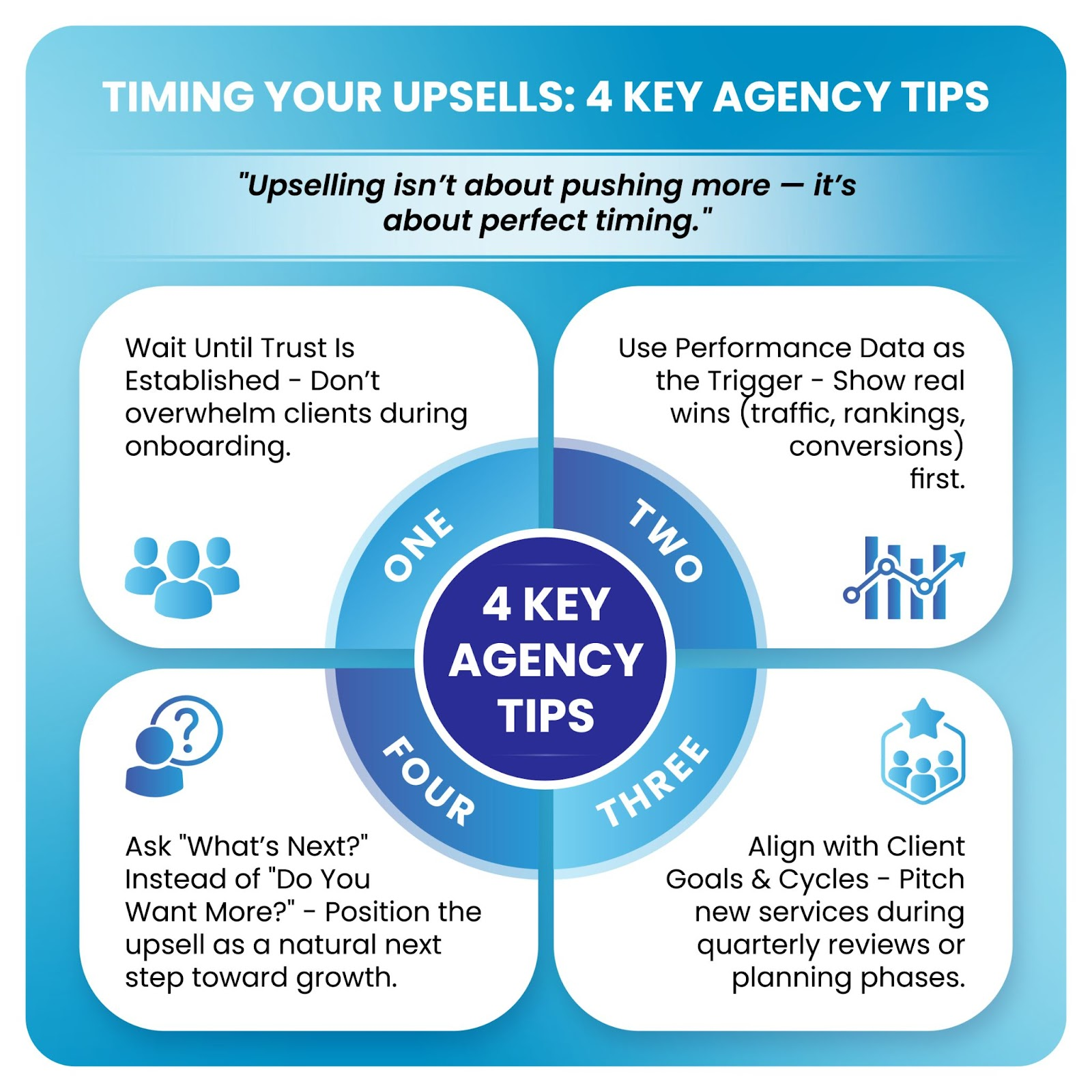
According to OpenSRS, existing clients buy 67% more than new ones, so cross-selling through trusted partners accelerates growth.
Create a “Reseller Kit” — one-page package breakdowns, pricing sheets, and case studies they can use to pitch. Keep it friction-free: flat commission, transparent pricing, and branded reports.
Your white label provider remains the silent fulfillment engine. You just multiplied your salesforce — without hiring a single person.
5. Metrics & KPIs for Subscription SEO Packages
Recurring revenue thrives on visibility and accountability.
You need to track and report the right metrics, both for clients and internally.
For clients, show progress with:
- Keyword growth and ranking distribution
- Organic traffic trends
- Local visibility (for multi-location businesses)
- Conversions from organic sources
For your agency, track:
- Monthly Recurring Revenue (MRR)
- Client churn rate
- Average Revenue per Client (ARPC)
- Customer Lifetime Value (CLV)
Benchmark: subscription businesses across industries averaged 7% MRR growth in 2023.
Internally, aim to grow your percentage of recurring revenue month over month. According to Medium, agencies that shifted 60–70% of their income to recurring models achieved 2× higher valuations compared to project-only shops.
When you can forecast income six months ahead, decision-making becomes data-driven, not desperate.
6. Retention & Lifecycle Management
Getting a client to sign up is just step one — keeping them is where the real profit lies.
Retention is the lifeblood of any subscription model. Agencies leveraging white label SEO partners see higher retention rates, largely because consistent delivery builds trust.
Here’s how to boost retention:
- Schedule monthly strategy calls — not just reports.
- Share progress dashboards, highlight wins, and preview next month’s plan.
- Celebrate milestones (e.g., “Your organic traffic grew 30% this quarter!”).
- Offer quarterly upsells — content expansion, backlink campaigns, or local SEO add-ons.
Clients who see steady progress stay loyal.
Think of retention like compound interest: each renewal adds value to your base. Losing one client costs more than acquiring one — so treat every check-in as an opportunity to reaffirm ROI.
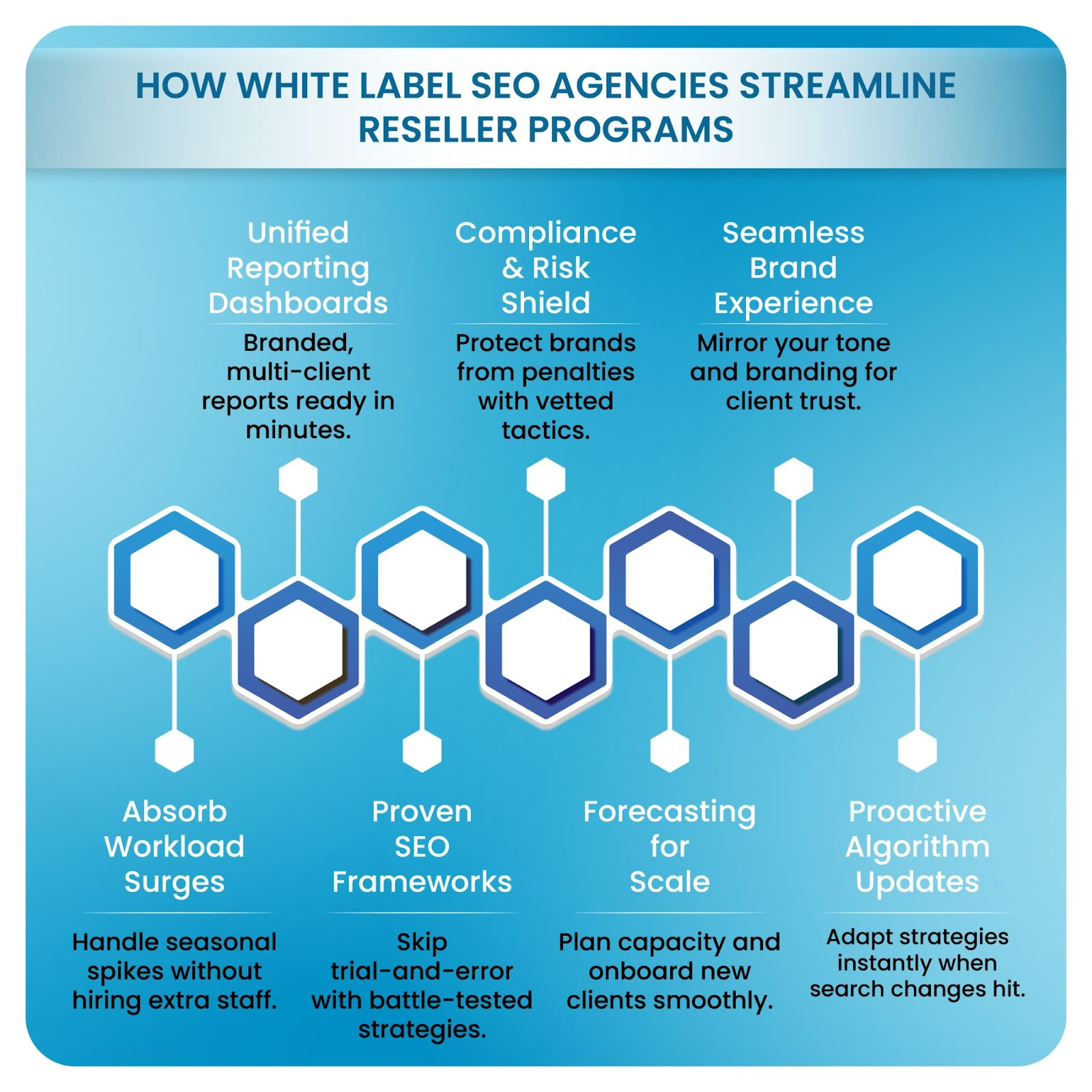
Packaging, Pricing & Reseller Partner Setup
Now that you understand the model, let’s talk numbers.
Example Subscription Packages
- Starter SEO Package — $1,000/month + $1,000 setup: Includes keyword research, on-page fixes, local citations, and 2 monthly blog posts.
- Growth SEO Package — $2,500/month + $2,500 setup: Everything in Starter + monthly link building, quarterly technical audits, and monthly strategy call.
- Premium SEO Package — $5,000/month + $5,000 setup: All of the above + dedicated account manager, advanced schema optimization, and PR-SEO amplification.
Using a white label SEO provider, your cost might be $600 / $1,400 / $3,000, respectively, leaving a 40–50% gross margin.
Add minimum 6–12-month commitments to protect recurring income and improve retention.
For resellers, offer simple commissions (e.g., 20% recurring). Provide a plug-and-play onboarding guide with your pricing, reporting samples, and brand assets.
Example math:
- 10 clients on the Growth plan = $25,000 MRR
- At 45% margin → $11,250 gross profit per month
- Annualized = $135,000 profit — all from consistent SEO delivery managed by your white label SEO team.
Scalability doesn’t require new hires; it just requires structure.
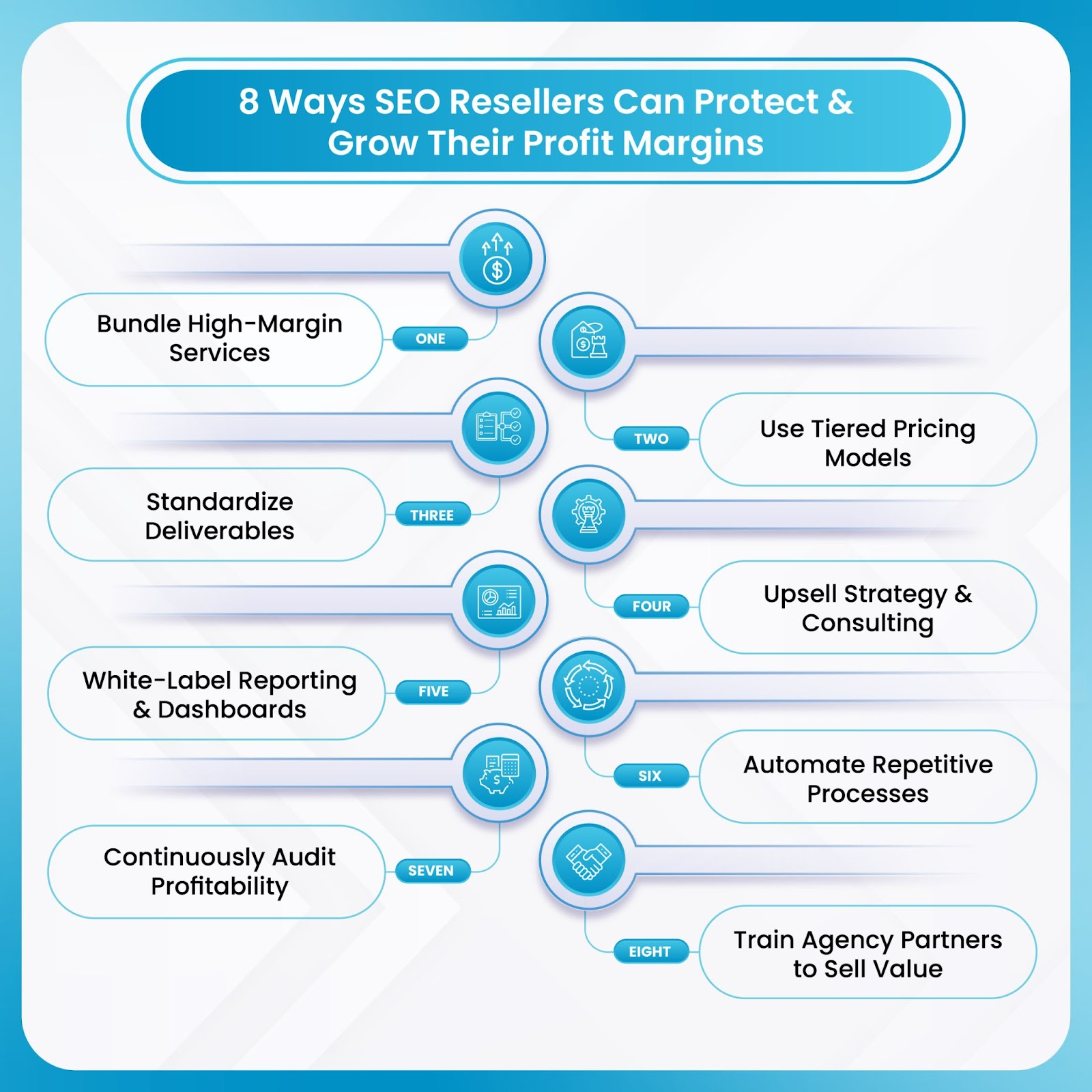
Case Study / Real-World Example
Let’s look at how this works in practice.
One mid-sized digital agency offering web design wanted to stabilize revenue. They partnered with a white label SEO provider and converted 20 past web-design clients into $2,000/month SEO retainers.
In 12 months, they grew to $40,000 in monthly recurring revenue ($480K ARR) — without adding new staff. Their average client stayed 13 months, and referrals doubled because every client received consistent reporting.
Similarly, Unlmtd Agency reported scaling to $1.6 million in recurring revenue from just 50 clients by introducing structured subscription packages and standardized delivery.
The key difference wasn’t fancy branding or viral campaigns. It was the system: clear packages, predictable fulfillment, strong white label SEO partnership, and consistent reporting.
When your offer becomes repeatable, your results become reliable — and your revenue, recurring.
Implementation Roadmap: 30/90/180 Day Plan
Here’s how to build your recurring SEO engine step-by-step.
First 30 Days
- Audit your current services and identify one-off SEO clients who could transition to monthly retainers.
- Choose a reliable white label SEO partner.
- Define 2–3 packages and a simple pricing sheet.
- Create onboarding templates and a sample report.
Next 90 Days
- Sign and onboard your first 5 subscription clients.
- Set up branded dashboards and automated reporting.
- Launch a reseller referral program for complementary agencies.
- Track MRR, churn, and upsell conversions monthly.
By 180 Days
- Review pricing/margins and optimize packages.
- Upgrade loyal clients to higher tiers.
- Aim for 60%+ of your revenue to come from recurring subscriptions.
- Evaluate white label SEO partner performance and scale outreach accordingly.
Consistency beats complexity — focus on doing the basics well, month after month.
Power Your Subscription SEO Packages with DashClicks’ White Label SEO
Building recurring revenue starts with having a fulfillment engine you can rely on — one that delivers high-quality SEO work every single month without adding overhead, hiring specialists, or managing complicated workflows. That’s exactly what DashClicks’ white label SEO services are designed for.
With DashClicks, you get a full behind-the-scenes SEO team handling everything from keyword research and content creation to link building, reporting, audits, and ongoing optimization. You sell subscription packages under your own brand — and we do the heavy lifting to make sure clients see progress month after month.
This lets your agency:
- Launch subscription SEO packages instantly.
- Improve client retention with consistent monthly deliverables.
- Scale revenue without expanding your in-house team.
- Free up time to focus on sales, upsells, and retention.
- Build predictable, high-margin monthly recurring revenue.
If you’re ready to turn SEO into a stable, scalable subscription model, white label SEO services give you everything you need to start strong and grow fast — without added complexity.
Conclusion
Project-based work can build momentum — but subscription SEO builds stability.
With the right white label SEO partner, clear packages, and retention strategy, your agency can replace unpredictable revenue with predictable growth.
You’ll sell once, deliver for months, and compound client value over time.
If you’re ready to stop starting from zero every month, start by auditing your current client list. Find 3 one-off projects you can convert into SEO subscriptions this quarter — and you’ll see how fast recurring revenue transforms your business.
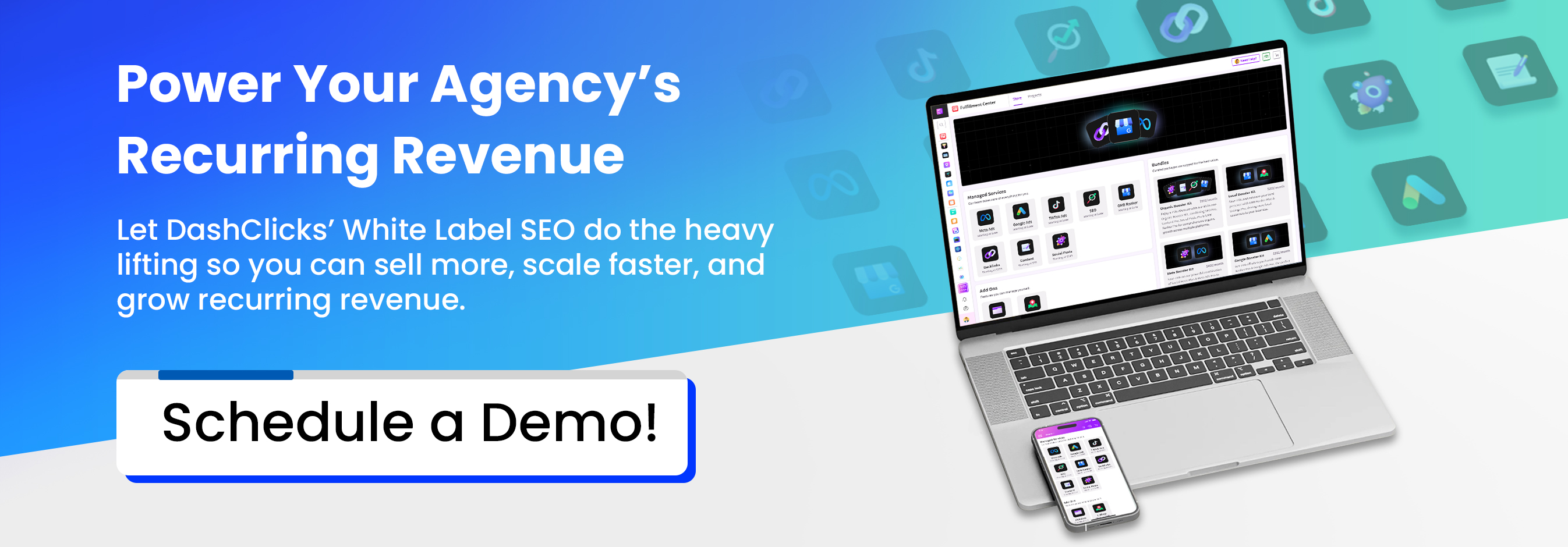

Ad Fatigue Management: When and How to Refresh Creatives Using White Label Facebook Ads
Ad fatigue is one of the most persistent and overlooked challenges in digital advertising today. It creeps in quietly — first, your campaign performs well, drawing clicks, conversions, and strong engagement. But after a while, you notice numbers slipping: the click-through rate (CTR) falls, cost-per-click (CPC) starts rising, and conversions taper off. The same ad that once captured attention now blends into the feed like background noise.
This happens because audiences become desensitized to repetitive messaging. People scrolling through Facebook or Instagram have short attention spans, and once they’ve seen an ad multiple times, it loses its novelty. When that happens, the platform’s algorithm interprets declining engagement as a sign that the content isn’t relevant anymore — and starts showing it less frequently or charging more for impressions.
According to Meta’s 2024 Ad Performance Report, campaigns typically experience a 41% drop in CTR after an ad has been shown to the same user more than four times. The same report revealed that advertisers who refreshed creatives every 10–14 days maintained up to 30% higher engagement than those who ran the same visuals for a month or longer. That’s a huge difference in ROI, especially for agencies managing multiple client budgets.
Other studies back this up. Hootsuite’s 2025 Social Trends Report found that the average Facebook ad’s effective lifespan has shortened by nearly 20% since 2022, largely due to increased competition and user content saturation. With more advertisers chasing the same audience pools, creative burnout happens faster than ever.
For digital marketing agencies, this problem multiplies. Managing several campaigns across industries means juggling different fatigue timelines. One client’s ad may perform well for weeks, while another’s crashes after a few days of repetition. Without a structured system to detect fatigue early and refresh efficiently, agencies face a domino effect of underperforming campaigns — each one eroding client confidence and eating into margins.
To stay competitive, agencies need not only strong creative skills but also a repeatable, data-driven process for monitoring fatigue and executing timely refreshes. That’s where Facebook ads services and automated analytics tools can make all the difference.
Why Ad Fatigue Hurts Agencies More Than Brands?
While brands experience the pain of ad fatigue in the form of declining ROI, agencies feel it more acutely — because their performance reflects directly on client satisfaction and retention. When ads stop converting, clients don’t see “fatigue” as the culprit; they see poor management. And for agencies operating in competitive markets, a few underperforming campaigns can quickly turn into lost contracts.
The challenge intensifies for digital marketing agencies handling ten or more accounts simultaneously. Imagine multiple clients across different industries, all running Facebook ads that start fatiguing at once. Suddenly, CTRs drop across the board, costs rise, and every client expects answers — immediately. This not only pressures your ad managers but also disrupts your operations.
Ad fatigue also impacts scalability. When agencies take a reactive approach, refreshing creatives only after performance tanks, they lose control over workload planning. Designers rush to produce replacements, strategists scramble to find new angles, and reporting cycles turn chaotic. What should be a predictable, measured process becomes a scramble that drains resources and morale.
On the financial side, fatigue eats into Return on Ad Spend (ROAS). A campaign that’s running at a healthy 5:1 ROAS can easily dip below 3:1 once engagement drops — and recovering those numbers without a fresh creative push is rare. According to Socialinsider’s 2024 Facebook Ad Benchmark Report, advertisers who delayed refreshing fatigued creatives saw an average 22% increase in CPC and a 17% decrease in conversion rate within two weeks. For agencies managing multiple client budgets, those losses add up fast.
The ripple effects don’t stop at performance metrics. Ad fatigue strains client relationships, too. When results fall, even temporarily, clients may question whether the agency understands their audience or is giving their account enough attention. Maintaining transparency, proactive reporting, and a clear creative refresh process becomes essential to preserving trust.
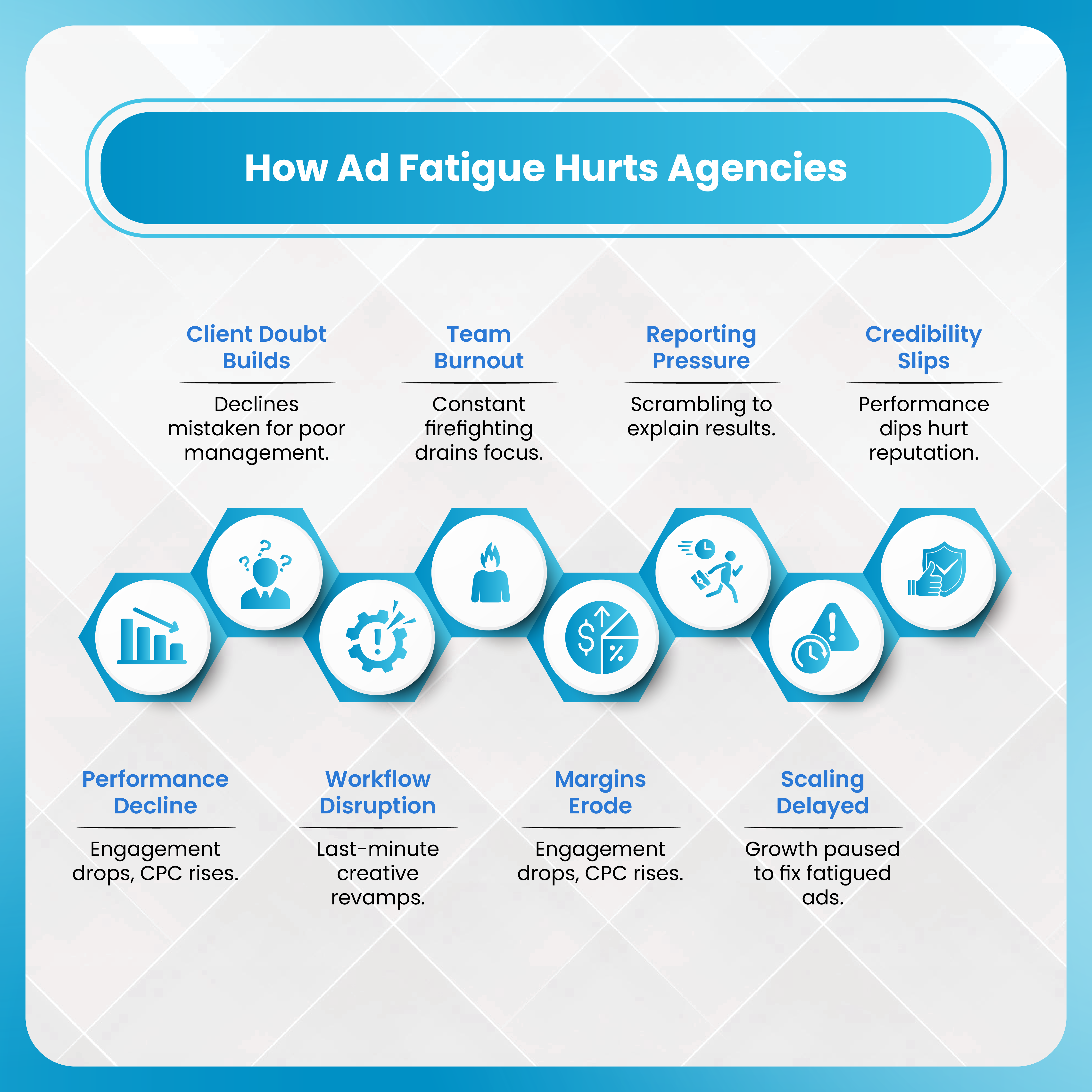
In short, agencies that treat fatigue as an afterthought end up in a cycle of reaction and recovery. Those that build fatigue management into their workflow — with predictive monitoring, planned refresh intervals, and access to scalable white label Facebook ads support — position themselves not just to survive performance dips, but to consistently outperform competitors.
Understanding the Lifecycle of a Facebook Ad Creative
Every Facebook ad goes through a natural life cycle. It launches, gains traction, performs well for a short time, and then gradually loses its impact. Understanding this cycle helps agencies anticipate when to step in before fatigue starts to erode results.
The length of that cycle depends on several factors — including industry type, creative format, and audience size. According to WordStream’s 2024 Facebook Ad Data Report, most creatives begin to lose efficiency within these general time frames:
- 7–10 days for eCommerce brands, where purchase decisions happen quickly and audiences see the same product repeatedly.
- 14–21 days for B2B or service-based campaigns, which tend to target broader, less impulsive audiences.
- 5–7 days for high-frequency retargeting ads, since they reach the same users more often.
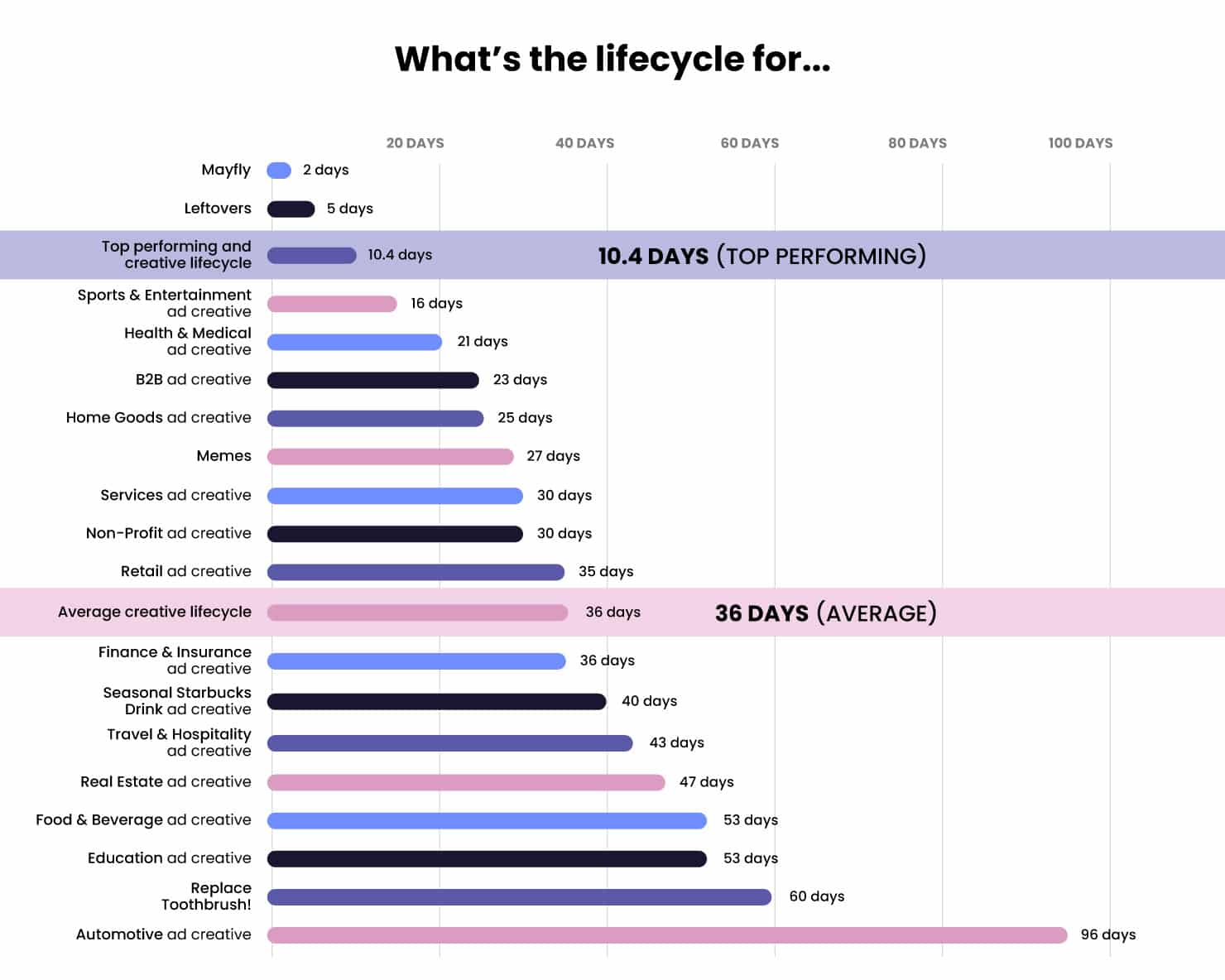
Image Source: Rocketium
That means even the most visually stunning ad isn’t built to last forever. Once the target audience grows accustomed to it, performance declines — usually reflected first in click-through rates and engagement metrics.
Several factors can accelerate fatigue:
- High Ad Frequency: When the same users see your ad too often (usually above 4–6 times), the novelty wears off.
- Audience Overlap: Reusing the same creative across overlapping audiences leads to oversaturation.
- Limited Variety: Relying on one or two visuals prevents new testing opportunities.
- Rapid Scaling: Increasing ad spend too fast can burn through your audience pool before you have time to refresh.
Facebook’s algorithm plays a big role here. Once it detects declining engagement, it prioritizes other ads that are generating stronger user interaction. As a result, your CPM (cost per thousand impressions) climbs while reach shrinks. Essentially, you start paying more to show your ad to fewer people — a clear sign it’s time for a refresh.
In today’s attention economy, this lifecycle is shortening even more. A 2025 Social Media Examiner study found that ad fatigue on Facebook and Instagram now sets in 25% faster than it did just two years ago, largely due to the rise of short-form video and constant content rotation. The faster audiences consume content, the more often advertisers must evolve their creatives to keep up.
Recognizing these patterns helps agencies plan ahead. By tracking creative lifespan by client and industry, teams can build refresh schedules that prevent fatigue rather than react to it.
Detecting Ad Fatigue Early: Metrics That Matter
The key to staying ahead of ad fatigue is spotting it early — before it starts dragging down your campaign ROI. The signs are always visible in your performance data if you know what to look for.
Here are the most reliable indicators:
- CTR (Click-Through Rate): A sudden drop is the first red flag. If your CTR falls consistently over several days, your creative is losing attention.
- CPC (Cost Per Click): Rising CPC often indicates Facebook’s algorithm is compensating for low engagement by charging more for visibility.
- Frequency: Once this crosses 4–6, your audience is likely seeing the ad too often. At this stage, review performance closely.
- Conversion Rate: If your CTR remains steady but conversions dip, it might be a sign that your offer or message no longer resonates.
- Negative Feedback: An increase in ad hides, negative reactions, or spam reports shows users are disengaged or annoyed.
For example, a digital agency recently noticed a gradual decline in CTR from 1.8% to 0.9% over 12 days, while frequency crept up to 5.2. Instead of overhauling the entire campaign, they simply replaced the headline and swapped out the main image. The result? CTR rebounded to 1.6% within three days — proving that minor, data-led tweaks can have major payoffs.
To make detection easier, agencies should rely on analytics tools that automate fatigue monitoring. Meta Ads Manager offers performance breakdowns by frequency, placement, and engagement, helping identify early warning signs. However, tools like DashClicks’ Analytics Software take it further. They allow agencies to track fatigue signals across multiple client accounts in real time and set up automated alerts when performance metrics fall below custom thresholds.
This kind of early detection system gives agencies the breathing room to plan creative refreshes strategically rather than reactively — ensuring performance stability across every client campaign.
When to Refresh Creatives (and When Not To)?
Refreshing too often wastes time; waiting too long wastes money. The key is interpreting data, not guessing.
Scenarios to guide timing:
- High CTR, Low Conversions: Keep the visuals; test new messaging or offers.
- High Frequency, Stable Results: No need to refresh yet; monitor closely.
- Decline Across All Metrics: Replace or adjust creative angles immediately.
A quick decision framework:
- Review the last 7–14 days of performance.
- Compare CTR, CPC, and conversion changes.
- If 2+ metrics drop by 20% or more, refresh.
- Track post-refresh impact within 48–72 hours.
How to Refresh Creatives Effectively Without Burning Budget?
Refreshing creatives doesn’t mean starting over. Agencies can sustain results with smart, small adjustments:
- Rotate Angles — focus on new pain points or customer outcomes.
- Test Alternate Visuals — swap backgrounds, colors, or ad layouts.
- Adjust the Hook — change the opening line or benefit statement.
- Experiment with CTAs — try different phrasing (“Book a Demo” vs. “Get Started Today”).
- Use A/B Tests — isolate one change per version to identify what drives improvement.
Example: In 2024, a marketing agency reported a 27% lift in CTR after refreshing just their primary text and image, keeping the offer and targeting intact—small tweaks, big impact.
Using White Label Facebook Ads to Scale Creative Refresh Cycles
Refreshing creatives regularly sounds simple in theory, but for most agencies, it’s one of the hardest parts of managing paid social campaigns. Between designing visuals, testing variations, analyzing results, and getting client approvals, creative fatigue management quickly becomes a full-time job. That’s where white label Facebook advertising services prove invaluable — giving agencies the ability to scale their operations without hiring additional staff or sacrificing quality.
A white label Facebook ads partner essentially functions as an extension of your team. They handle everything from ad creation and copywriting to performance tracking and optimization — all under your agency’s brand. This means your clients continue to see your agency as the source of all the work, while behind the scenes, a skilled fulfillment team ensures campaigns run smoothly.
Here’s how this model helps agencies stay agile and proactive when managing creative refresh cycles:
- Faster Turnaround: Instead of waiting weeks for a new batch of creatives, agencies can get fresh ads within days. This speed keeps campaigns dynamic and ensures you can respond quickly to fatigue or sudden performance drops.
- Built-in Testing: White label teams typically conduct A/B or multivariate tests as part of the creative process. They experiment with headlines, visuals, and call-to-action s to identify what resonates best with different audiences — something that saves agencies hours of trial and error.
- Transparent Reporting: The best white label providers give agencies access to real-time performance dashboards, making it easy to see which creatives are working and which need replacement. This visibility is essential for maintaining client trust and ensuring accountability.
- Consistent Brand Voice: Even though an external team produces the creatives, they work from detailed brand guidelines provided by the agency. This ensures that every refresh, whether it’s a subtle tweak or a full redesign, stays true to the client’s tone, look, and messaging.
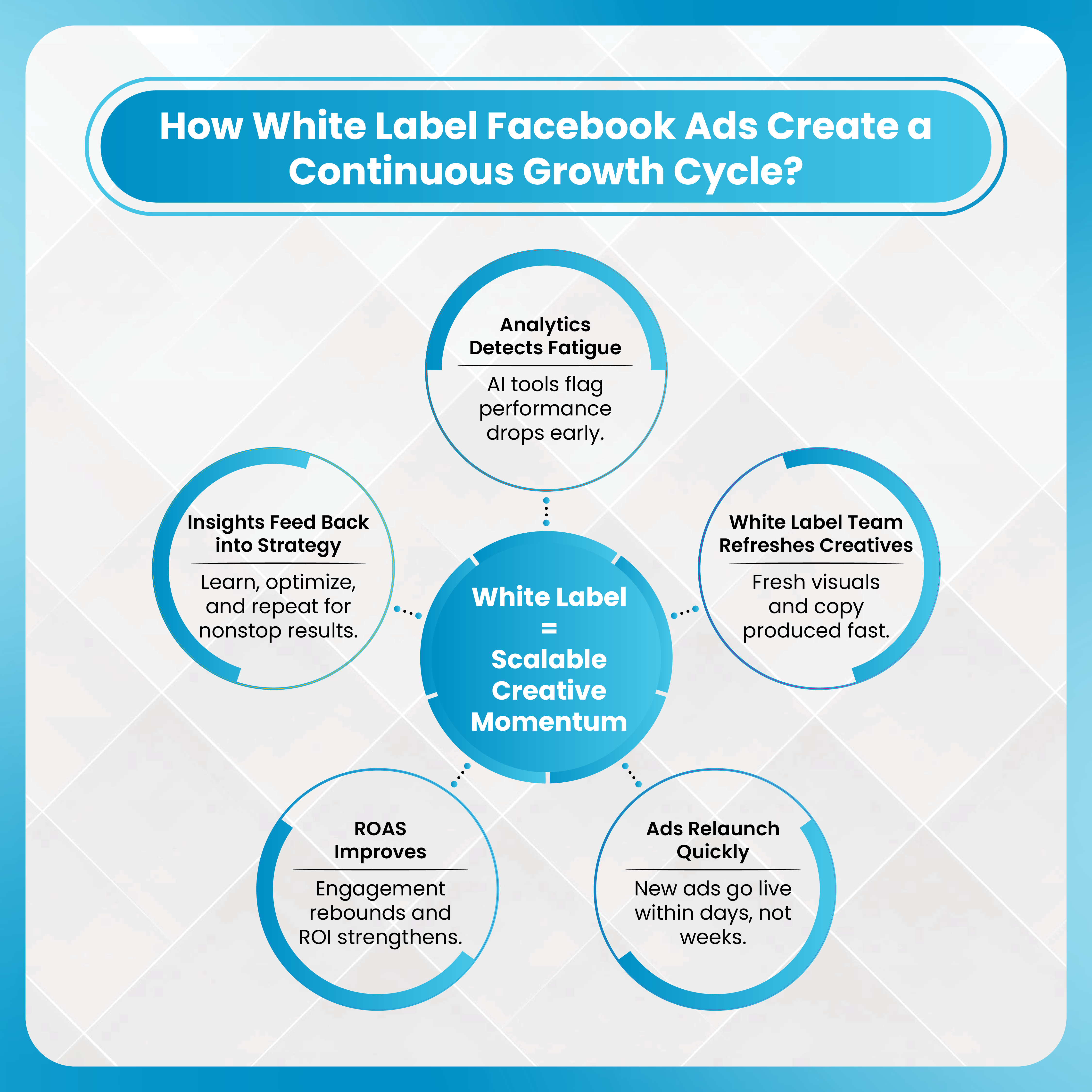
For example, a mid-sized marketing agency in Florida partnered with a white label provider to manage its Facebook ad creative refresh cycles. Before the partnership, each refresh took roughly 14 days to plan, design, approve, and launch. After outsourcing through a white label system, the turnaround time dropped to 5 days. That speed not only helped maintain engagement levels but also freed the internal team to focus on higher-level campaign strategy and client communication.
Another advantage is scalability. With the best white label Facebook ads structure, agencies can easily onboard new clients or expand ad budgets without worrying about bandwidth. The fulfillment team handles the production workload while the agency focuses on results and client relationships.
In the long run, this setup creates a win-win situation: agencies maintain creative agility, clients enjoy consistent campaign performance, and internal teams avoid burnout. When fatigue management is systemized through a trusted white label Facebook Ads partner, agencies can sustain growth without compromising on quality or speed.
The Automation Edge: Integrating AI and Data Tools
AI now plays a major role in managing ad fatigue. Tools like Meta Advantage+, AdCreative.ai, and Pattern89 analyze engagement patterns to predict when fatigue will occur before it impacts results.
By integrating these tools into a white label setup, agencies can:
- Identify fatigue trends early.
- Automate creative recommendations.
- Optimize ad delivery timing.
- Personalize creatives for micro-audiences.
This predictive approach allows agencies to stay ahead of fatigue, saving ad spend and protecting client ROAS.
DashClicks’ Role in Ad Fatigue Management
DashClicks helps digital marketing agencies combat ad fatigue by combining automation, creative analytics, and a structured refresh process under one white label platform. The system monitors ad performance across client accounts, automatically flags creatives showing signs of fatigue, and enables agencies to deploy new variants quickly — all while maintaining consistent branding and campaign transparency.
Their white label Facebook ads team produces fresh, data-driven creatives that align with audience behavior shifts. Agencies can manage everything through a single dashboard, ensuring campaigns stay engaging, cost-efficient, and optimized for conversion. This process not only reduces wasted ad spend but also helps agencies deliver consistent value to their clients without overloading internal creative teams.
Building a Sustainable Creative Refresh Framework for Your Agency
Managing fatigue isn’t a one-time task; it’s an ongoing discipline. Agencies can prevent future burnout by creating a refresh system that runs like clockwork:
- Create a refresh calendar based on industry cycles or performance signals.
- Use client feedback to guide creative direction.
- Run quarterly creative audits to find weak points.
- Document creative tests — what worked, what didn’t, and why.
- Standardize reporting so insights flow between the internal and white label Facebook ads team.
This structure helps agencies plan refreshes proactively instead of reacting to performance dips.
Final Thoughts: Turning Ad Fatigue Into an Agency Advantage
Ad fatigue isn’t a failure — it’s a signal. Every drop in performance offers data on what your audience is tired of and what might excite them next. Agencies that treat fatigue as a learning opportunity build smarter, more resilient campaigns.
By combining analytics, automation, and white label expertise, agencies can stay ahead of fatigue and turn creative refresh cycles into a competitive edge. Proactive management keeps clients confident, campaigns efficient, and results strong.
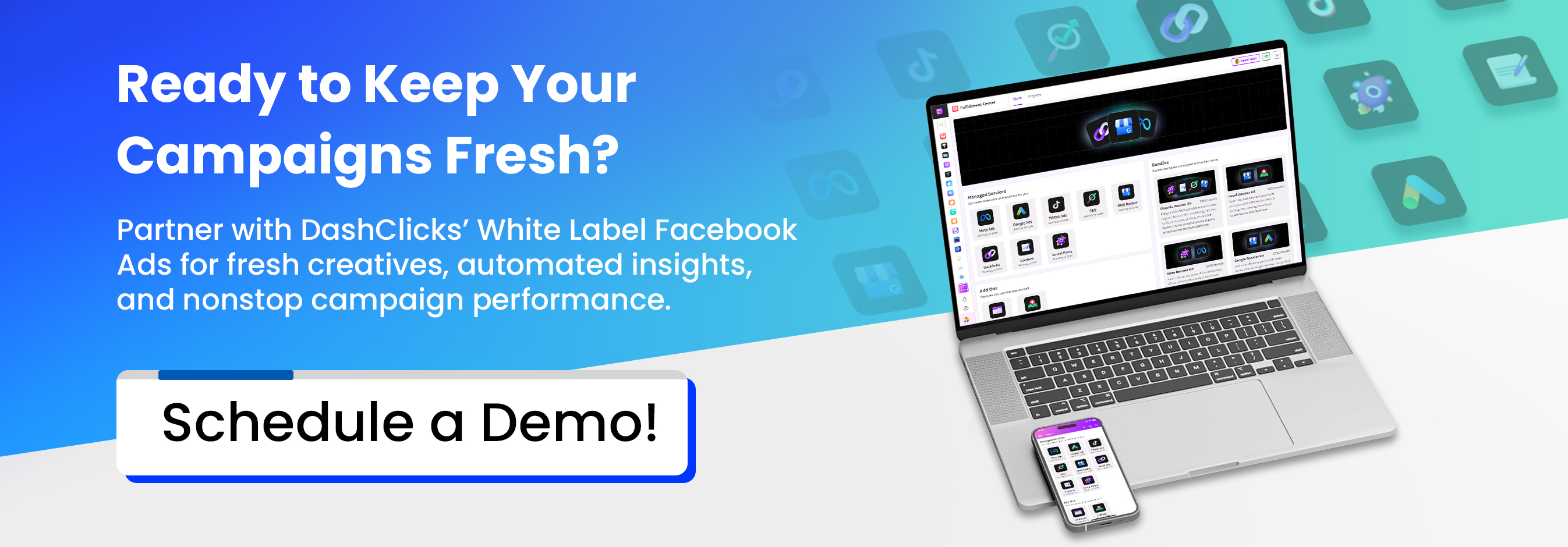
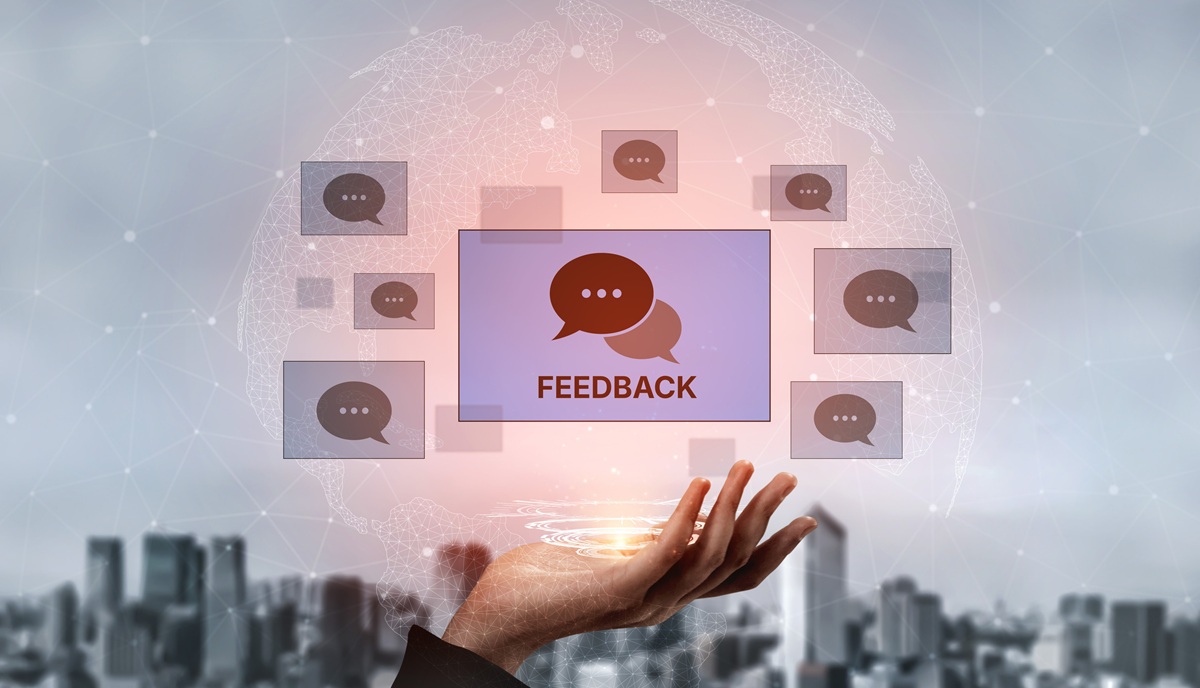
Building Feedback Loops Between Your Team and White Label SEO Provider for Continuous Improvement
For most digital marketing agencies, outsourcing SEO to a white label partner begins as a capacity solution — a way to fulfill more projects without expanding the internal team. But here’s the problem: outsourcing without feedback is just delegation, not collaboration.
Agencies often end up in a cycle of repeated deliverables, inconsistent results, and “firefighting” misalignments. The real growth happens when you turn that outsourced partnership into a continuous learning system — where every campaign teaches both teams something new, improving future performance and client satisfaction.
According to a 2024 Databox survey, 57% of agencies report that collaboration and reporting are their top operational time sinks. However, agencies that actively build structured feedback loops cut project turnaround times by up to 25% and see up to 30% higher client retention.
A well-engineered feedback loop transforms SEO outsourcing from a vendor transaction into an extension of your agency’s intellectual capital — where each iteration compounds results.
The Importance of a Feedback Loop in SEO Partnerships
Agencies often turn to white label SEO providers to tap into specialized expertise and scale their service offerings. While outsourcing can provide immediate capacity and technical know-how, many agencies struggle to sustain a continuous learning process that adapts to shifting client needs, industry trends, and search engine updates. Without a structured feedback system, outsourced efforts can remain siloed, limiting both performance and long-term growth.
A well-implemented feedback loop changes that dynamic. It ensures that both your internal team and the white label SEO provider stay aligned, responsive, and focused on measurable outcomes. By fostering regular communication, shared accountability, and data-driven decision-making, a feedback loop transforms SEO efforts from routine execution into a cycle of continuous improvement.
Key Benefits of a Strong Feedback Loop
- Accelerated Client Wins: Quickly identifying and addressing performance gaps allows agencies to optimize campaigns faster, resulting in more immediate improvements for clients.
- Enhanced Client Retention: Consistently delivering measurable results builds trust and satisfaction, strengthening long-term client relationships and encouraging renewals.
- Operational Efficiency: Clear communication channels, structured processes, and defined roles reduce misunderstandings and delays, enabling teams to work more effectively.
- Data-Driven Decision Making: Continuous feedback provides real-time insights, allowing agencies to refine strategies proactively rather than reactively.
By investing in a structured feedback loop, agencies not only improve campaign outcomes but also create a framework that scales knowledge, reduces friction, and supports sustainable growth.
What Constitutes an Effective Feedback Loop?
A “feedback loop” is not just about weekly check-ins or messages. It’s a living system that collects data, synthesizes insights, prioritizes actions, and repeats — with accountability built in.
Think of it as a six-step operational flywheel:
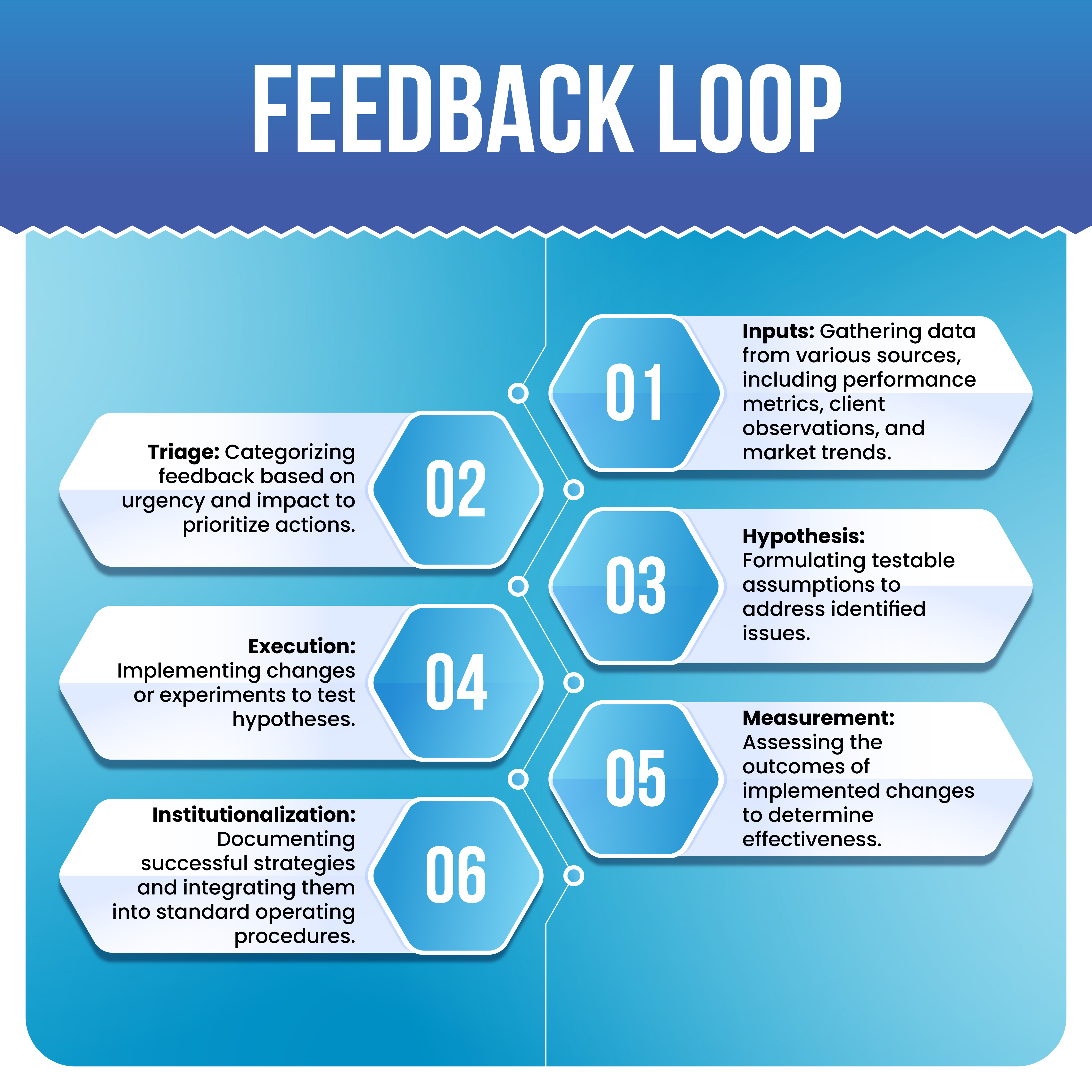
This cyclical process ensures that both teams are continuously learning and adapting, leading to sustained improvements in SEO performance.
Types of Feedback You Must Capture (and Why Each Matters)
Different kinds of feedback drive different insights. Agencies that treat all feedback equally often drown in noise — while those that structure it strategically turn chaos into clarity.
Here are five essential feedback streams:
- Performance Feedback: Quantitative data such as click-through rate (CTR), impressions, rankings, and conversion metrics.
- Experience Feedback: Qualitative insights from clients and internal teams regarding user experience and satisfaction.
- Process Feedback: Observations about workflow efficiencies or bottlenecks, including issues with SLAs or content review cycles.
- Creative Feedback: Input on messaging, tone, and calls to action that resonate with the target audience.
- Market Feedback: Information on competitor activities, industry trends, and regulatory changes that may impact SEO strategy.
Each type of feedback deserves its own capture format — form submissions for client input, call notes for qualitative context, automated tags for performance data.
The Point: structured collection is the foundation for structured improvement.
Design Patterns for Bullet-Proof Feedback Loops
To ensure the feedback loop is effective and actionable, consider the following design patterns:
- Single Source of Truth (SSOT): Maintain a centralized repository for all SEO-related data and documents to ensure consistency and accessibility.
- Event-Driven Feedback Ingestion: Implement automated systems to capture feedback in real time, reducing delays and ensuring timely responses.
- Triage Matrix (Impact × Effort): Develop a system to evaluate feedback based on its potential impact and the effort required to address it, facilitating efficient prioritization.
- Feedback Contracts: Establish clear agreements outlining the types of feedback accepted, expected response times, and criteria for resolution.
- Data Schema Standardization: Agree on consistent definitions for key metrics to prevent misunderstandings and ensure accurate reporting.
The more standardized the feedback system, the less interpretation is required. That clarity accelerates improvement cycles and fosters trust between teams.
Cadence & Governance — What to Run, How Often, and Who Owns It
Regular and structured interactions between teams are essential for maintaining an effective feedback loop:
- Daily: Monitor automated alerts for anomalies such as traffic dips or crawl errors.
- Weekly: Conduct brief triage sessions to review new feedback and assign responsibilities.
- Biweekly: Plan and execute mini-sprints to test new strategies or address identified issues.
- Monthly: Review outcomes, assess KPI progress, and gather client feedback to inform future actions.
- Quarterly: Hold strategic retrospectives to evaluate long-term trends and update roadmaps accordingly.
Assign ownership across three critical roles:
- Agency Liaison: client-facing strategist prioritizing commercial value.
- Partner Delivery Lead: white label SEO team lead, ensuring timely execution.
- Data Steward: custodian of consistent metrics and analytics integrity.
This cadence ensures structure, agility, and accountability.
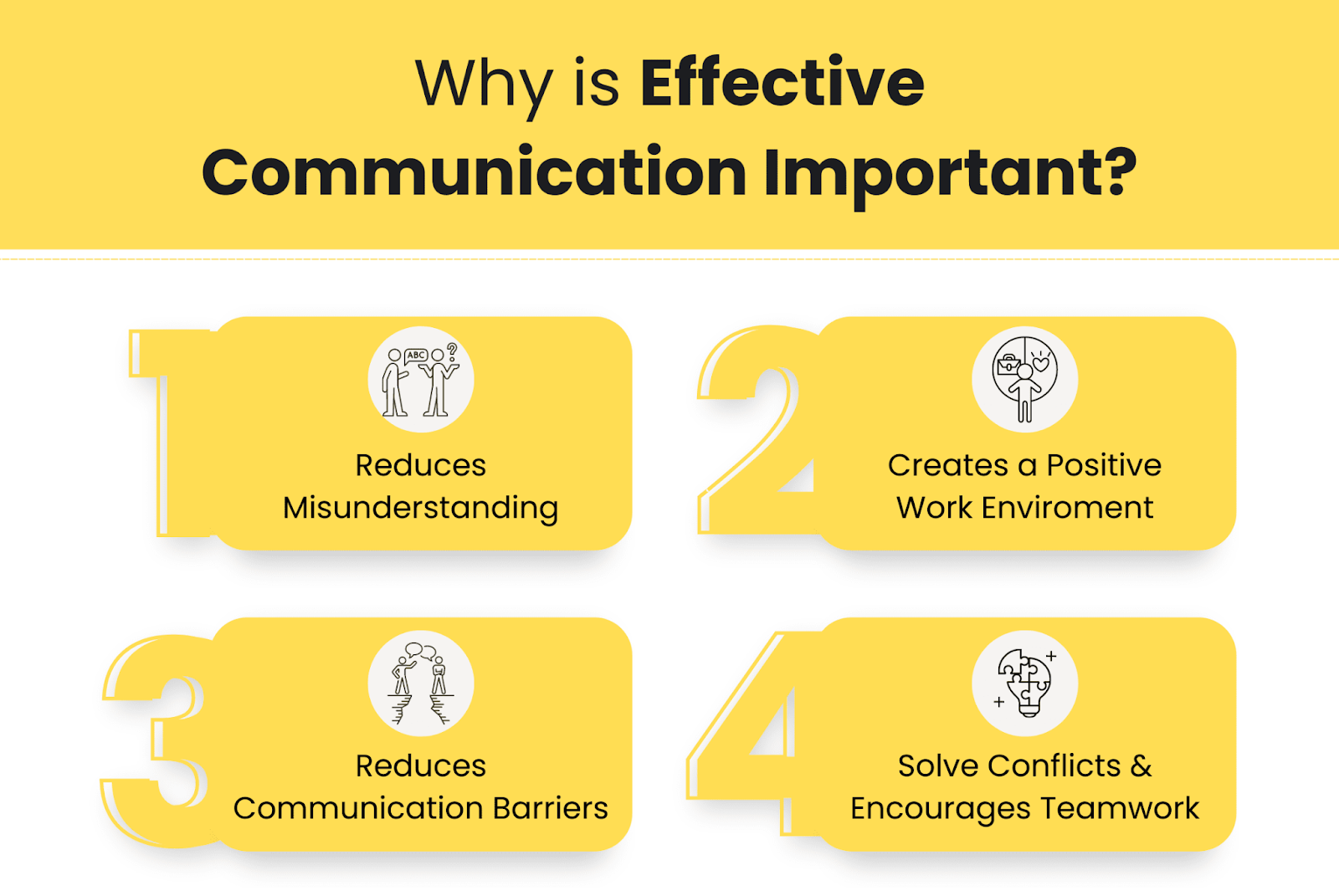
Experimentation Framework - Turning Feedback into Measurable Improvements
Transforming feedback into actionable improvements requires a structured approach to experimentation:
- Hypothesis Development: Clearly define the expected outcomes of proposed changes to set measurable goals.
- Testing: Begin with small-scale tests to minimize risk, gradually scaling successful strategies.
- Run Controlled Rollouts: Use feature flags or staged deployment for on-page changes — ensures rapid rollback if metrics dip.
- Failure Post-Mortems: Document root causes, hypothesis validity, and next steps. Learning from failed experiments is the essence of continuous improvement.
This system turns your agency–client relationship into a data-driven innovation pipeline instead of a task handoff process.
Measuring Success and Attribution - Proving the Loop Moved the Needle
1. Portfolio & Client KPIs
- Organic traffic and lead growth
- Keyword ranking velocity
- Time to first-page ranking
- Retention and renewal rate
2. Signal-Level Metrics
- Reduction in crawl errors
- Indexation speed
- Internal link equity changes
- CTR improvements post-content edits
3. Attribution & Reporting
- Use time-decay or multi-touch attribution to connect SEO influence across channels.
- Always compare against baseline and measure deltas — what changed, by how much, and why.
According to Zippia, organizations with structured feedback systems see 15–20% higher productivity and improved cross-functional engagement.
In SEO, that translates into faster optimization cycles and predictable ROI.
Fostering a Feedback-Oriented Culture
A successful feedback loop is supported by a culture that values continuous improvement:
- Shared KPIs: Align incentives between the agency and SEO provider to promote mutual success.
- Blameless Post-Mortems: Encourage learning from failures without assigning blame to foster a growth mindset.
- Knowledge Sharing: Implement systems to document and share successful strategies and insights across teams.
- Client-Centric Training: Ensure that all team members understand client objectives and outcomes to align efforts effectively.
Continuous improvement is 70% process, 30% culture — and the culture part determines long-term sustainability.
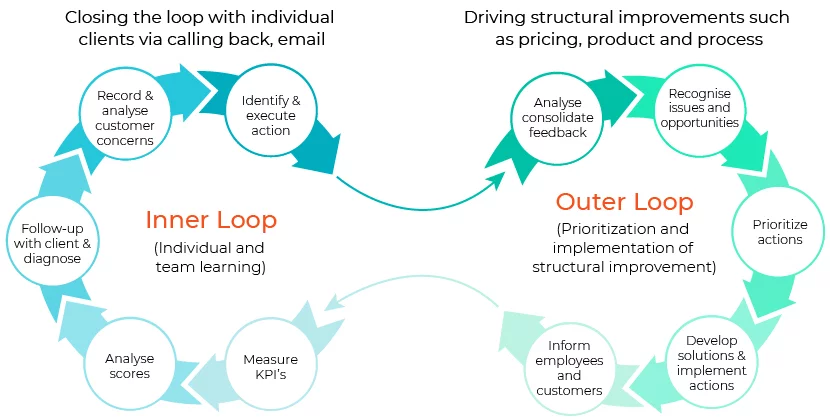
Image Source: Acuity Knowledge Partners
Common Pitfalls and How to Avoid Them?
Agencies should be aware of potential challenges in the feedback process:
- Feedback Overload: Too much feedback without action can lead to confusion and inaction. Implement triage systems to prioritize effectively.
- Metric Drift: Misaligned definitions can cause disagreements. Standardize data definitions to ensure consistency.
- Analysis Paralysis: Overanalyzing data can delay decision-making. Limit the number of concurrent experiments to maintain focus.
- Knowledge Gaps: Without proper documentation, valuable insights can be lost. Regular knowledge transfer sessions are essential.
When prevented early, these pitfalls turn your partner relationship from reactive to proactive.
A Practical Example: 8-Week Feedback Cycle
Consider a scenario where a client reports a 40% drop in leads from a specific city:
- Week 0: Gather initial feedback and identify potential issues.
- Week 1: Conduct triage and hypothesize that indexation delays and broken schema markup are contributing factors.
- Week 2: Implement changes on a small set of pages.
- Weeks 3–4: Measure the impact, observing a 12% increase in click-through rates.
- Week 5: Expand the changes to a broader set of pages.
- Week 7: Review cross-channel effects, noting improvements in PPC performance.
- Week 8: Conduct a retrospective, document the process, and plan for future optimizations.
Through this iterative process, the agency successfully addresses the client's concerns, leading to improved performance and satisfaction.
How DashClicks Facilitates Continuous Feedback and Growth?
DashClicks offers comprehensive white label SEO services and a platform that supports the establishment of effective feedback loops:
- Real-Time Analytics: Centralized dashboards provide live data on keywords, backlinks, and deliverables, ensuring transparency and timely insights.
- Automated Feedback Channels: In-platform tagging and revision requests streamline the process of capturing and acting on feedback.
- Pattern Recognition: The platform identifies recurring trends, enabling the refinement of strategies and playbooks.
- Client Retention Tools: Transparent reporting and consistent improvements help build trust and encourage client renewals.
- Seamless Integrations: DashClicks integrates with tools to facilitate smooth collaboration between teams.
By leveraging DashClicks, agencies can transform their SEO partnerships into dynamic, feedback-driven engines of growth.
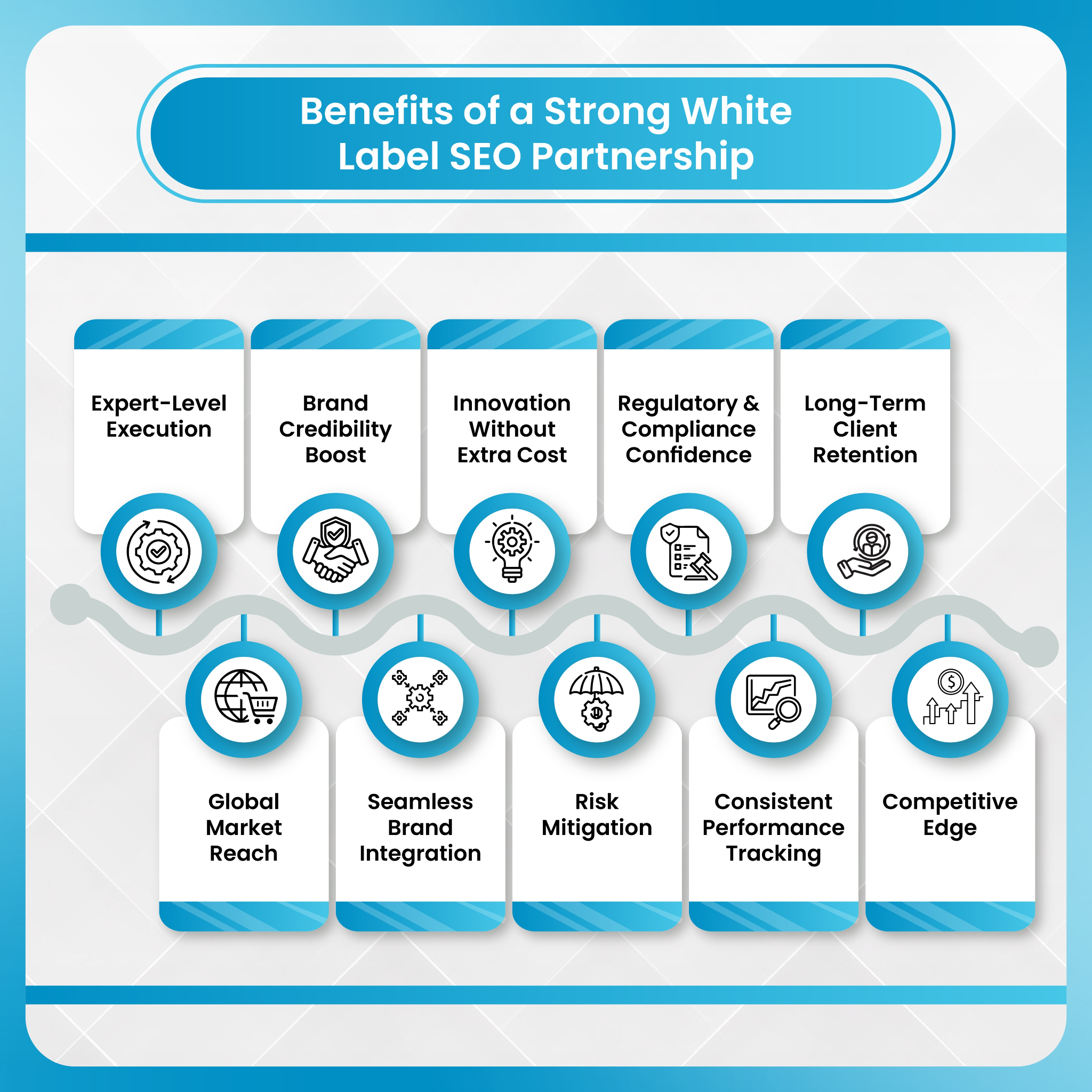
Implementing a 9-Point Playbook for Immediate Impact
To kickstart a robust feedback loop between your team and your white label SEO agency, it’s essential to have a structured plan. The following nine steps provide a clear roadmap for immediate action and long-term results:
1. Establish a Single Source of Truth (SSOT)
Begin by creating a centralized inventory for all SEO-related data, including keywords, content, backlinks, and campaign deliverables. This ensures that both your internal team and your white label provider are working from the same reference point. By eliminating duplicate spreadsheets, conflicting data, or misaligned versions, the SSOT fosters consistency, reduces errors, and allows faster decision-making. Think of it as the master file that captures every insight, change, and result in one place.
2. Assign Roles
Clear accountability is crucial for a smooth feedback loop. Assign specific roles such as:
- Agency Liaison: The main point of contact for client-facing issues, responsible for prioritizing commercial value and communicating expectations to the SEO team.
- Partner Delivery Lead: Oversees execution of SEO tasks, experiments, and revisions based on feedback.
- Data Steward: Maintains the integrity of metrics and ensures that all teams are using consistent definitions for KPIs and other key measurements.
These roles prevent confusion, ensure timely responses, and create a structured chain of ownership for every feedback item.
3. Automate Feedback Collection
Implement tools and integrations that capture feedback automatically. Forms, CRM inputs, and direct integrations with platforms can feed client and internal feedback directly into your SSOT. This reduces the risk of losing insights in emails or ad-hoc messages and ensures that feedback reaches the right person without delay. Real-time capture makes it easier to respond quickly and prioritize effectively.
4. Develop a Triage System
Not all feedback is equal—some items are urgent, others are more experimental. Develop a triage matrix that evaluates each piece of feedback based on its impact (how significantly it affects KPIs) and effort (time or resources required to address it). This approach helps categorize actions into:
- Quick Wins: Easy, high-impact changes.
- Experiments: Medium-impact adjustments to test performance.
- Backlog/R&D: Longer-term initiatives or exploratory ideas.
A triage system ensures the most valuable feedback gets attention first while keeping long-term improvement projects organized.
5. Set Service Level Agreements (SLAs)
To keep the loop running efficiently, define clear SLAs for feedback responses. Establish expectations for:
- Response Time: How quickly feedback should be acknowledged.
- Action Time: How long it takes to implement changes or experiments.
- Closure Criteria: How to know when feedback has been successfully addressed.
SLAs create accountability for both your agency and the SEO provider, preventing feedback from stagnating and improving overall reliability.
6. Conduct Experiments
Turn feedback into measurable improvements through structured experimentation. Start with a small-scale test, such as optimizing a few pages or targeting a specific keyword cluster. Use a clear hypothesis format: "If we implement X, we expect Y metric to improve by Z% in T days."
This controlled approach allows your team to validate changes before rolling them out broadly, minimizing risk while maximizing learning.
7. Utilize AI Tools
AI can significantly streamline feedback processing. AI tools summarizers help condense long client emails, detailed reports, or multi-team comments into actionable insights. This reduces the cognitive load on your team and ensures that no critical point is overlooked. Additionally, AI can help identify recurring patterns in feedback, enabling you to detect underlying issues and opportunities more efficiently.
8. Host Regular Reviews
Schedule monthly outcome reviews with both your internal team and your white label SEO agency. During these sessions:
- Discuss experiments conducted and their results.
- Evaluate KPIs and compare performance against baselines.
- Identify lessons learned and prioritize the next set of actions.
Document all decisions, actions, and insights from these meetings in your SSOT to ensure that knowledge is preserved and shared across teams.
9. Institutionalize Successes
Finally, transform successful experiments and improvements into standardized playbooks. This step ensures that strategies that work for one client or campaign are not lost but instead become repeatable practices across the agency. Over time, institutionalizing successes helps scale your processes, accelerates future wins, and creates a culture of continuous improvement.
Conclusion: Transforming Outsourced SEO into a Strategic Asset
The agencies that scale fastest aren’t just outsourcing work — they’re outsourcing learning. Every campaign, experiment, and insight becomes part of a continuously evolving delivery system.
By investing in structured, transparent feedback loops with a reliable white label SEO partner, you move from reactive management to proactive optimization — achieving faster turnarounds, fewer escalations, and measurable client retention growth.
DashClicks helps agencies bridge that gap — transforming data and feedback into repeatable performance gains. Start with your first SSOT and a single triage meeting — the compounding results will speak for themselves.
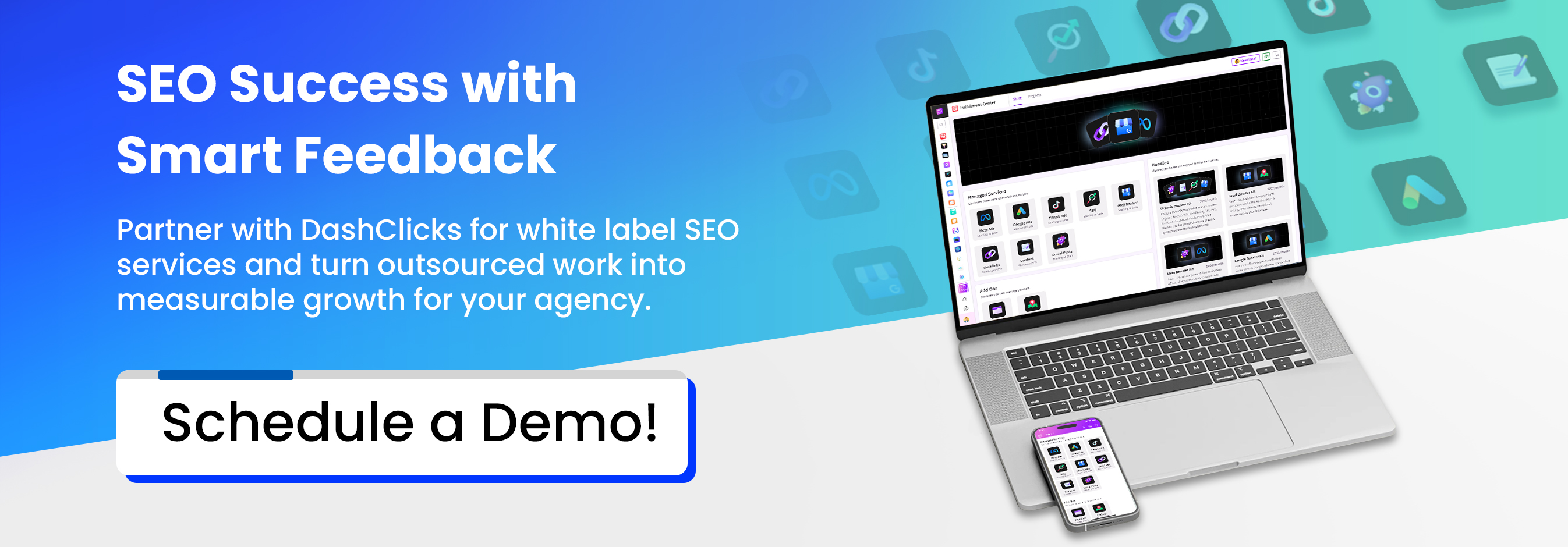

Agency Profit Margins & White Label PPC: Finding the Sweet Spot Between Cost and Control
Rising advertising costs and tighter client expectations are squeezing agency margins like never before. Google Ads CPCs jumped 15-20% year-over-year across industries in 2024, while client budgets remained flat. For many agencies, this creates a challenging equation: how do you scale profitably when fulfillment costs grow faster than revenue?
The answer lies in finding the perfect balance between cost efficiency and strategic control. While many agencies struggle with either expensive in-house teams or risky full outsourcing, smart agencies are discovering a third path. White label PPC services offer a way to maintain client relationships and strategic oversight while dramatically improving profit margins.
This isn't about giving up control of your campaigns. It's about leveraging specialized expertise and proven systems to transform your cost structure while keeping what matters most under your direct management.
Understanding the Profit Equation in PPC Agencies
Agency profitability comes down to a simple formula: Revenue per client minus all fulfillment costs. But what's changed dramatically is how expensive those fulfillment costs have become.
Labor costs are skyrocketing. PPC talent shortages have driven average salaries up 12-15% year-over-year. A skilled Google Ads specialist now costs $60,000-$80,000 annually, plus benefits and overhead.
Technology expenses keep multiplying. Between bid management tools, analytics platforms, reporting software, and conversion tracking systems, agencies often spend $500-$1,500 per month on tech stacks per campaign manager.
Client churn from inconsistent performance adds hidden costs. Industry data shows that replacing a lost client costs 2-3x more than retaining them, making performance consistency crucial for long-term profitability.
Average marketing agency earns a net profit margin between 6 and 10 percent, with digital agencies reporting even higher margins of around 20 percent. Corporate advertising agencies, in some cases, report margins as high as 40 percent.
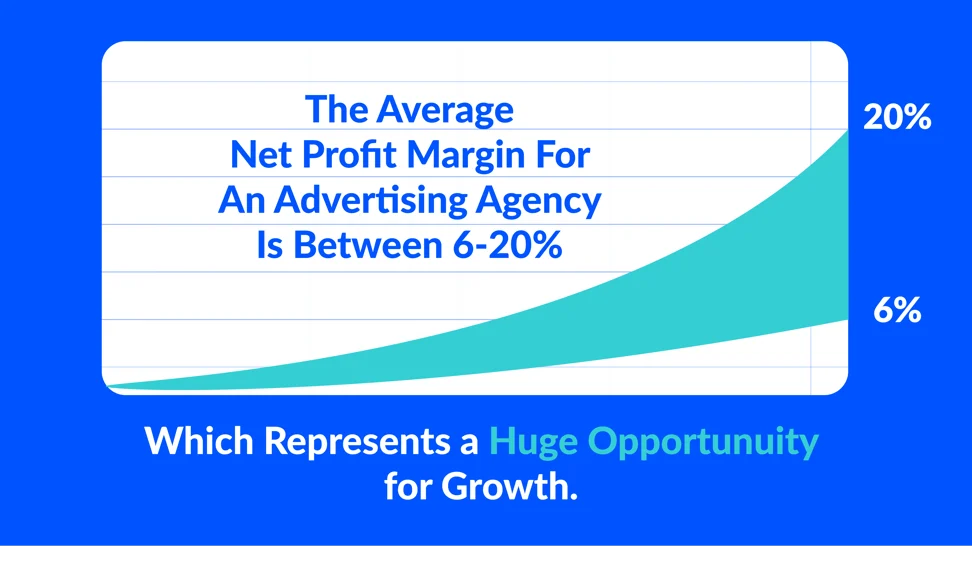
Image Source: AskCody
However, Promethean Research's 2024 study found that many agencies fall short of these benchmarks due to fulfillment inefficiencies and rising operational costs.
The key insight? Most agencies don't need more clients – they need better cost-to-control leverage across their PPC operations.
Where Margin Leaks Happen (and Why Most Agencies Miss Them)?
Smart agency owners know that profit leaks often hide in plain sight. Here are the five most common places where margins disappear:
- Leak #1: Overstaffing for Surge Cycles creates expensive downtime. Hiring full-time staff for peak workload means paying for unused capacity during slower periods. An agency paying a PPC manager $6,000 monthly only sees productive work 60-70% of the time on average.
- Leak #2: Time Drain from Repetitive Optimizations kills profitability. Bid adjustments, budget pacing, keyword research, and A/B testing consume hours that don't directly add strategic value. Yet these tasks are essential for campaign performance.
- Leak #3: Rework costs from inconsistent quality compound quickly. Without standardized processes, campaign structures vary by team member, leading to confusion, errors, and time-consuming corrections.
- Leak #4: Technology fragmentation multiplies expenses. Many agencies pay for overlapping tools – separate platforms for reporting, bid management, conversion tracking, and client dashboards – without realizing the total monthly cost.
- Leak #5: Client churn replacement costs devastate margins. HubSpot's 2024 Agency Growth Report confirms that each lost client costs 2-3x more to replace than to retain, making consistent campaign performance essential for long-term profitability.
Consider this example: An agency spending $10,000 monthly on in-house PPC labor typically sees only 35% of those hours spent on true optimization. The rest goes to reporting, administrative tasks, and routine maintenance – activities that don't differentiate the agency or add strategic value.
The Sweet Spot Between Cost and Control
Most agencies fall into one of two traps that hurt profitability:
- Over-Control Approach: Managing everything in-house provides great visibility but poor scalability and low profit margins. You're paying premium salaries for routine tasks while limiting growth potential.
- Over-Outsourcing Approach: Handing off everything to external providers boosts margins but creates client experience risks and dangerous dependency on partners you can't directly manage.
The sweet spot lies between these extremes. Successful agencies retain strategic control over budgeting, account architecture, client communication, and reporting while outsourcing repetitive execution and specialized technical work.
This approach follows a simple framework: "Control where it matters, outsource where it compounds."
Agencies using hybrid outsourcing models report improvement in gross margins without compromising service quality. They maintain direct relationships with clients while benefiting from specialized expertise and economies of scale.
How White Label PPC Services Unlock Margin Growth?
White label PPC services directly address each profit lever in your agency's equation. Here's how they transform your economics:
1. Fixed-Cost to Variable-Cost Transformation
Traditional hiring creates fixed monthly expenses regardless of workload. White label services convert payroll into flexible fulfillment costs that scale with your revenue.
Instead of paying a Google Ads strategist $6,000 monthly (plus benefits and overhead), you pay per-account costs that average 40-50% less. During slow periods, your costs decrease proportionally. During growth phases, you avoid the lag time and risk of hiring new team members.
2. Efficiency Through Specialization
White label providers manage thousands of campaigns across multiple industries. This volume creates pattern recognition and benchmark data that individual agencies can't match internally.
Testing cycles accelerate because providers have seen similar challenges across many accounts. Campaign structures are pre-optimized based on proven frameworks. This "speed-to-optimization" improvement reduces the crucial first 30-60 days when client churn risk is highest.
3. Technology Leverage Without Additional Licensing
Most white label partners include advanced tools within their service pricing. Agencies gain access to enterprise-level bid management platforms, conversion tracking systems, and automated reporting tools without separate licensing fees.
For example, services often include smart dashboards, multi-channel analytics, and client-ready performance reports – eliminating $500-$1,500 in monthly tool costs per campaign manager.
4. Cross-Platform Expertise
Managing Google Ads, Meta, LinkedIn, and Bing simultaneously becomes cost-prohibitive with individual specialists. A White label PPC agency provides pre-built cross-channel frameworks and optimization strategies.
This capability increases average client value by 25-40% as agencies can offer comprehensive paid media strategies rather than single-platform campaigns.
5. Standardization Equals Scale
Productized processes reduce error variance and create predictable delivery timelines. Consistent performance leads to happier clients, longer contracts, and higher lifetime values.
Meanwhile, your internal team can focus on strategy, agency-client relationship management, and business development – activities that generate the highest margins and differentiate your agency.

Calculating the Hidden ROI: A Real Margin Model
Consider this comparison between traditional in-house operations and a hybrid white label PPC approach:
Traditional In-House Model (per client):
- Average monthly retainer: $2,500
- Labor cost per account: $1,200
- Technology and tools: $200
- Management overhead: $400
- Gross margin: 28%
Hybrid White Label Model (per client):
- Average monthly retainer: $2,500
- White label fulfillment: $700
- Technology (included): $0
- Management oversight: $150
- Gross margin: 58%
This represents a 30-percentage-point margin improvement. For an agency managing $600,000 in annual retainer revenue, this translates to an additional $180,000 in gross profit.
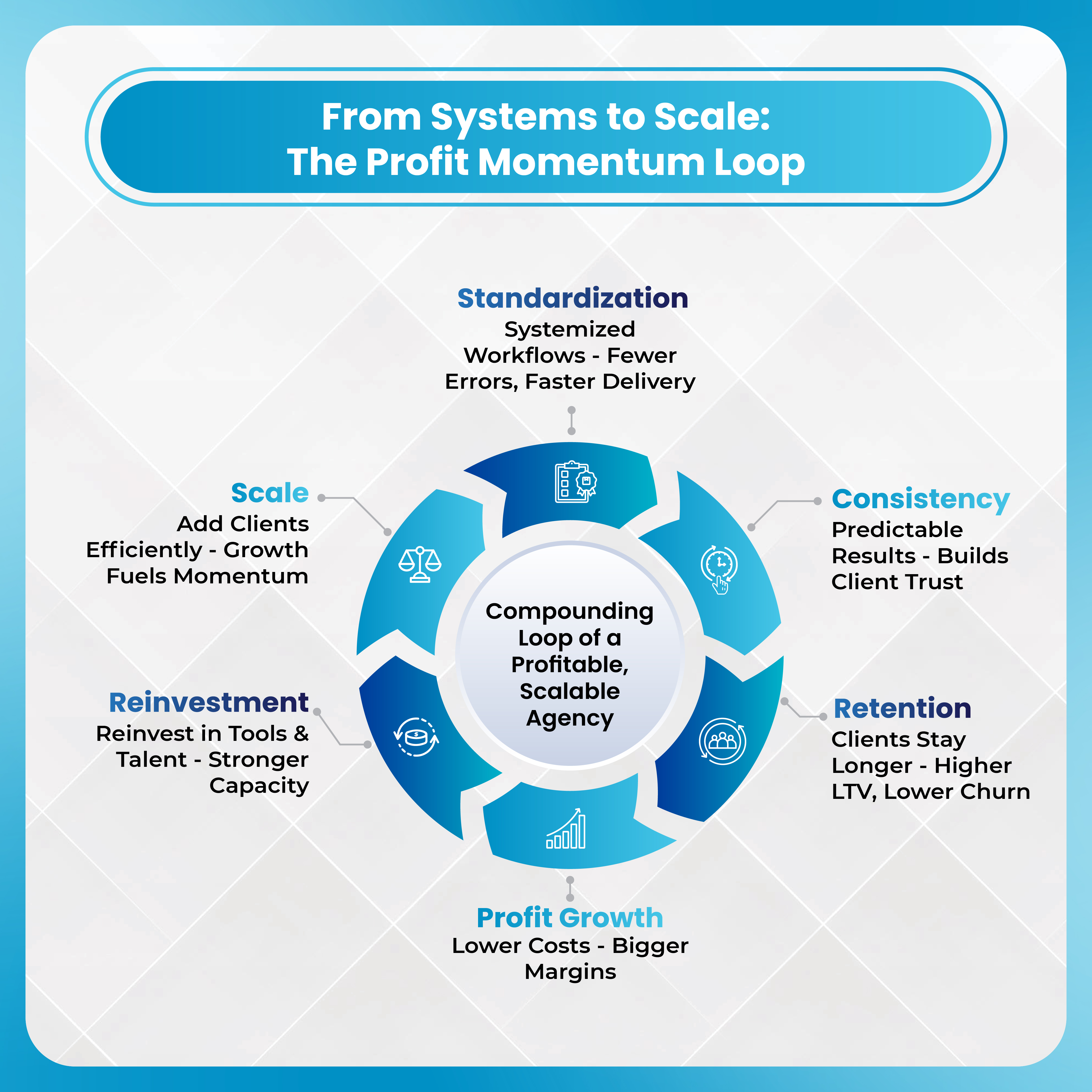
Agencies using standardized white label processes achieve higher client retention rates due to consistent performance delivery.
Managing the Control Side: Retaining Strategic Ownership
The key to successful white label PPC partnerships is maintaining control over client-facing activities and strategic decisions. Here's how smart agencies structure these relationships:
- Client communication stays in-house. All client touchpoints, strategy presentations, and performance reviews remain under direct agency control.
- Clear escalation protocols define when external teams consult internal strategists for major decisions or campaign pivots.
- Shared dashboards and transparent reporting eliminate "black box" concerns. Agencies maintain full visibility into campaign performance, optimization activities, and budget allocation.
- Weekly strategy reviews ensure external execution aligns with client goals and agency standards.
Agencies using white label services with defined escalation protocols experience fewer client escalations compared to those with unclear boundaries.
The Cultural ROI: Happier Teams and Clients
Beyond financial benefits, hybrid models create positive cultural changes. Internal teams avoid burnout from repetitive optimization tasks and can focus on strategic work that showcases their expertise.
Client satisfaction improves when campaigns receive consistent, specialized attention. Performance becomes more predictable, and agencies can confidently offer service level commitments.
This virtuous cycle creates internal bandwidth for new business development, leading to higher client lifetime values and sustainable growth.
According to the Digital Agency Network, agencies with specialized outsourcing partners report 20% higher employee retention rates compared to those handling all fulfillment internally.
How DashClicks Helps Agencies Master the Cost-Control Balance?
DashClicks specifically addresses the challenge of maintaining profit margins while scaling PPC operations. Their white label PPC services provide the transparency and control agencies need while delivering the cost efficiency that drives sustainable growth.
The system includes unified dashboards that give agencies real-time visibility into campaign performance across Google Ads, Meta, Bing, and other channels. This eliminates the "black box" concern that often prevents agencies from leveraging external expertise.
Their fulfillment model scales predictably with agency growth. Instead of hiring full-time specialists at $60,000+ annually, agencies pay flexible per-account costs that average 40-50% less than internal alternatives. During peak periods, capacity automatically scales up. During slower months, costs adjust proportionally.
The platform includes all necessary technology – bid management tools, conversion tracking, automated reporting, and client dashboards – within the service cost. This eliminates the technology fragmentation that often adds $500-$1,500 monthly per campaign manager in separate tool licensing.
Most importantly, DashClicks maintains the agency-client relationship. All communication, strategy development, and client presentations remain under direct agency control. The partnership handles execution and optimization while agencies retain strategic ownership and client relationships.
Actionable Framework: 7 Steps to Rebalance Cost and Control
Ready to optimize your agency's profit margins? Follow this systematic approach:
Step 1: Audit Current Cost Structure: Separate strategic activities from execution tasks. Calculate the true cost per hour for each team member, including salary, benefits, and overhead.
Step 2: Identify Underutilized Capacity: Track how much time goes to routine optimizations, reporting, and administrative tasks versus strategic work that differentiates your agency.
Step 3: Select a Partner with Integrated Technology and Fulfillment: Look for providers that include necessary tools within service pricing rather than adding separate software costs.
Step 4: Pilot with 2-3 Existing Accounts: Compare performance metrics and profit margins between traditional and hybrid approaches over 60-90 days.
Step 5: Create Standardized Workflows: Develop clear processes for client communication, strategy approval, and performance review to maintain control while leveraging external expertise.
Step 6: Implement Shared Dashboards: Ensure full visibility into campaign performance and optimization activities to eliminate concerns about outsourcing quality.
Step 7: Scale Systematically: Gradually transition additional accounts while monitoring client satisfaction and internal team satisfaction.
Agencies following this framework typically see 20-30% improvement in net profit per client within 90 days, according to aggregated industry surveys from 2024.
Profitable Growth Through Strategic Partnership
The future of agency profitability isn't about choosing between cost efficiency and strategic control. It's about finding partners that enable both simultaneously.
White label PPC services represent this evolution. The right partnership transforms variable costs into predictable margins while maintaining the client relationships and strategic oversight that differentiate successful agencies.
Smart agencies recognize that sustainable growth requires leverage – the ability to serve more clients profitably without proportional increases in internal resources. This isn't about reducing quality or losing control. It's about focusing internal expertise on activities that create the most value while leveraging external specialists for execution excellence.
The agencies thriving in 2024's challenging economic environment have learned to optimize their profit equation. They control where it matters most and outsource where it compounds their capabilities.
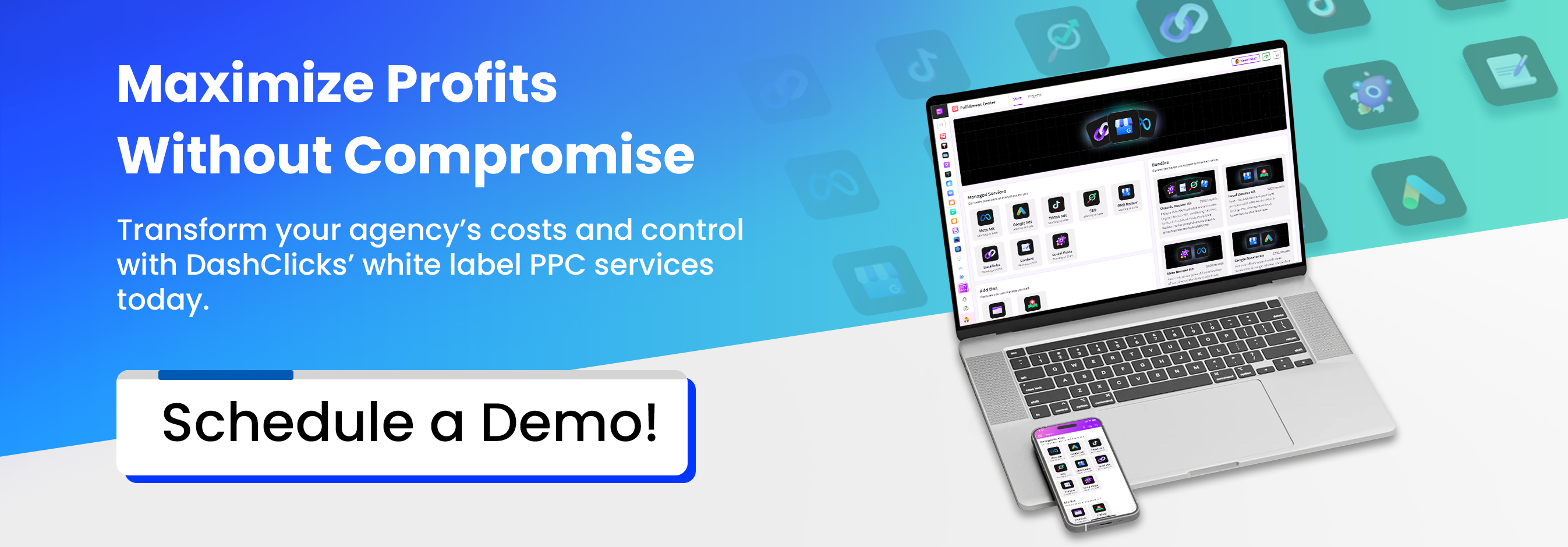

No results found.
Please try different keywords.
Get Started with
DashClicks Today
Get found online, convert leads faster, generate more revenue, and improve your reputation with our all-in-one platform.
.svg)
Unlimited Sub-Accounts
.svg)
Unlimited Users
.svg)
All Apps
.svg)
All Features
.svg)
White-Labeled
.svg)
Active Community
.svg)
Mobile App
.svg)
Live Support
.svg)
100+ Tutorials
.svg)
Unlimited Sub-Accounts
.svg)
Unlimited Users
.svg)
All Apps
.svg)
All Features
.svg)
White-Labeled
.svg)
Active Community
.svg)
Mobile App
.svg)
Live Support
.svg)
100+ Tutorials
.svg)
Unlimited Sub-Accounts
.svg)
Unlimited Users
.svg)
All Apps
.svg)
All Features
.svg)
White-Labeled
.svg)
Active Community
.svg)
Mobile App
.svg)
Live Support
.svg)
100+ Tutorials



.svg)
.svg)
.svg)
.svg)
.svg)


